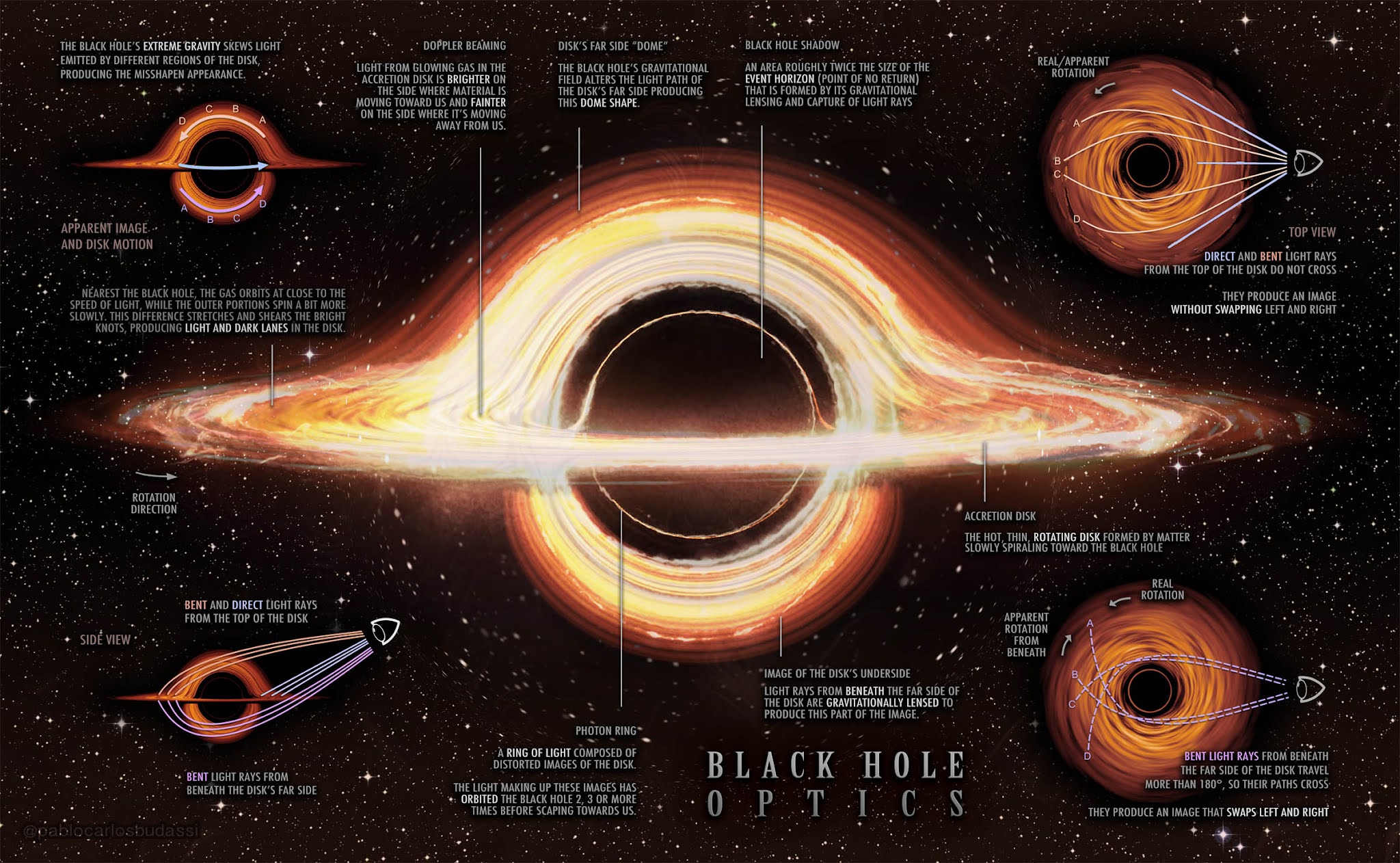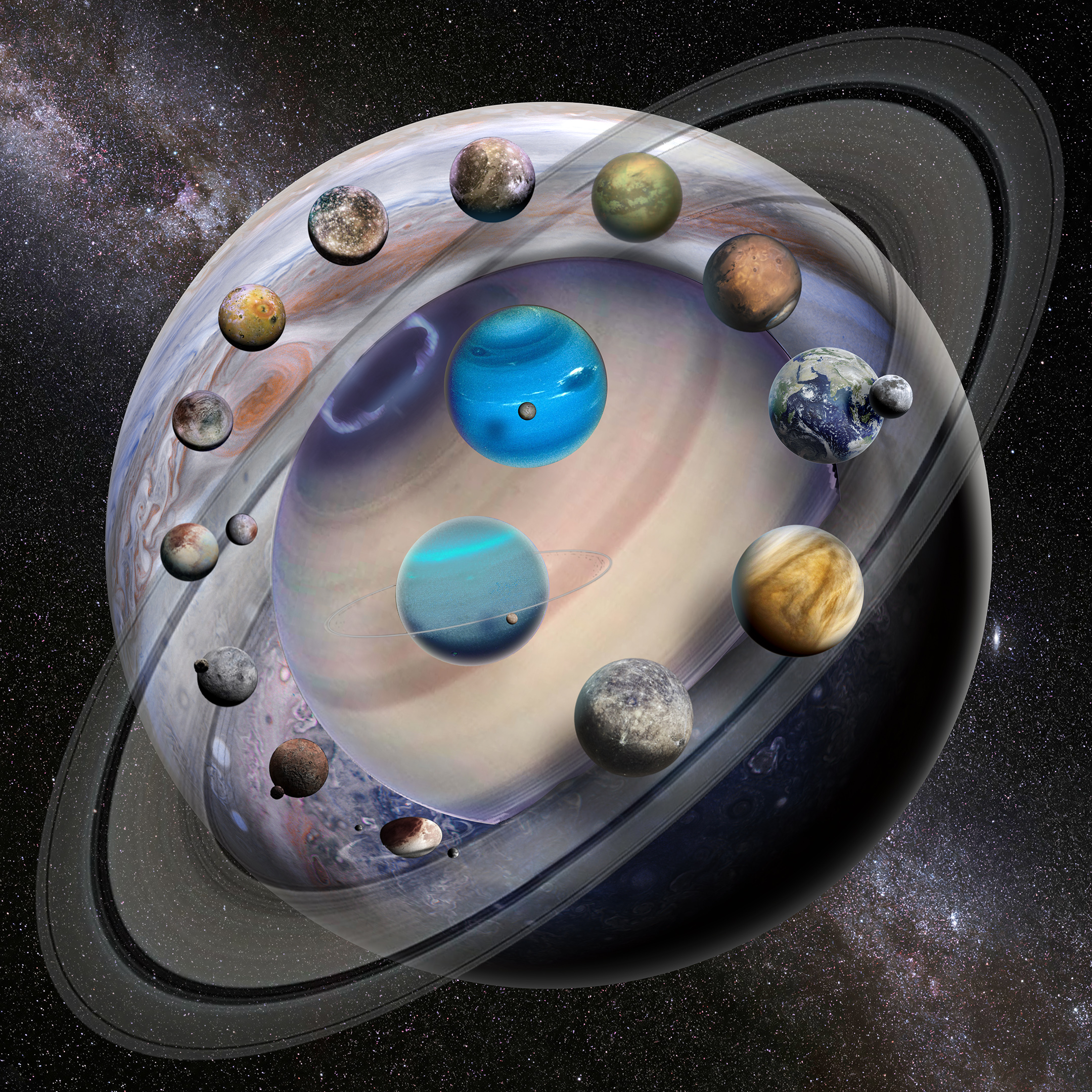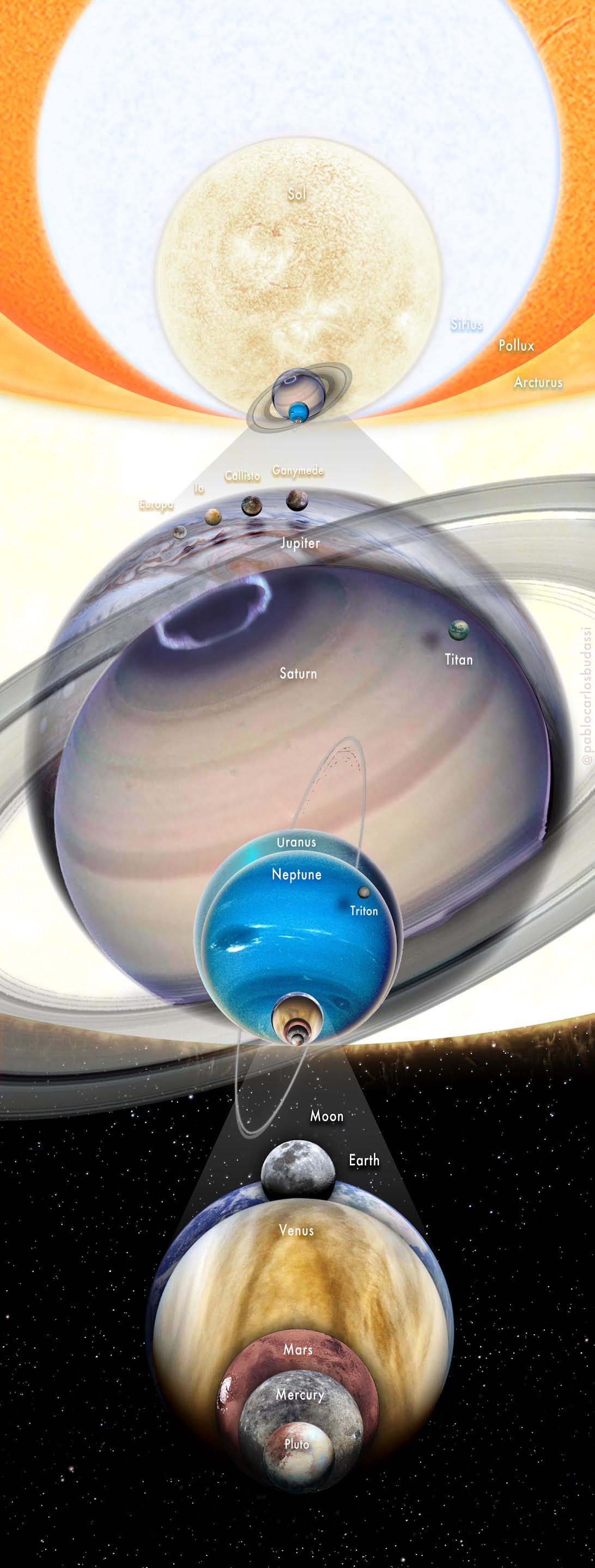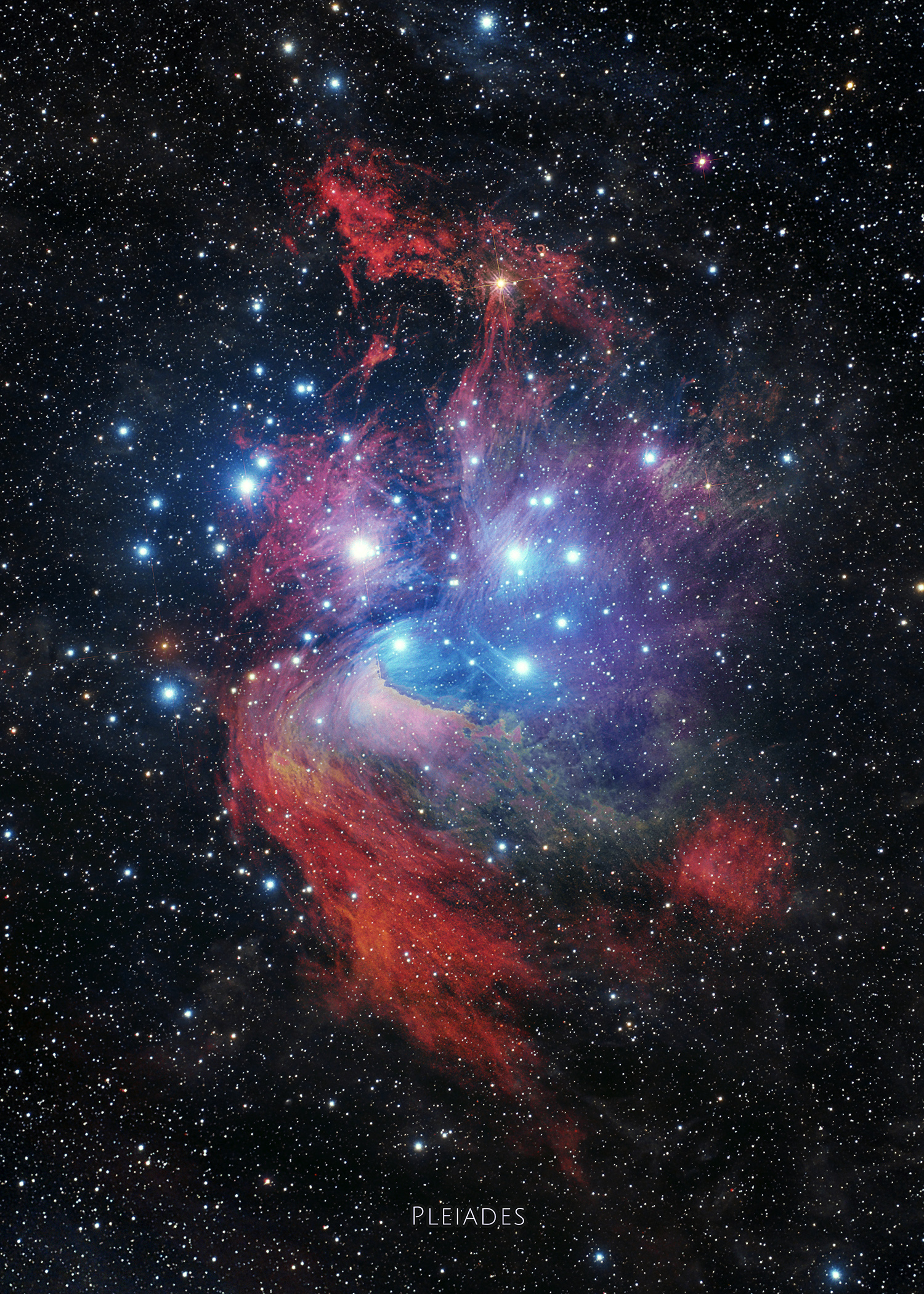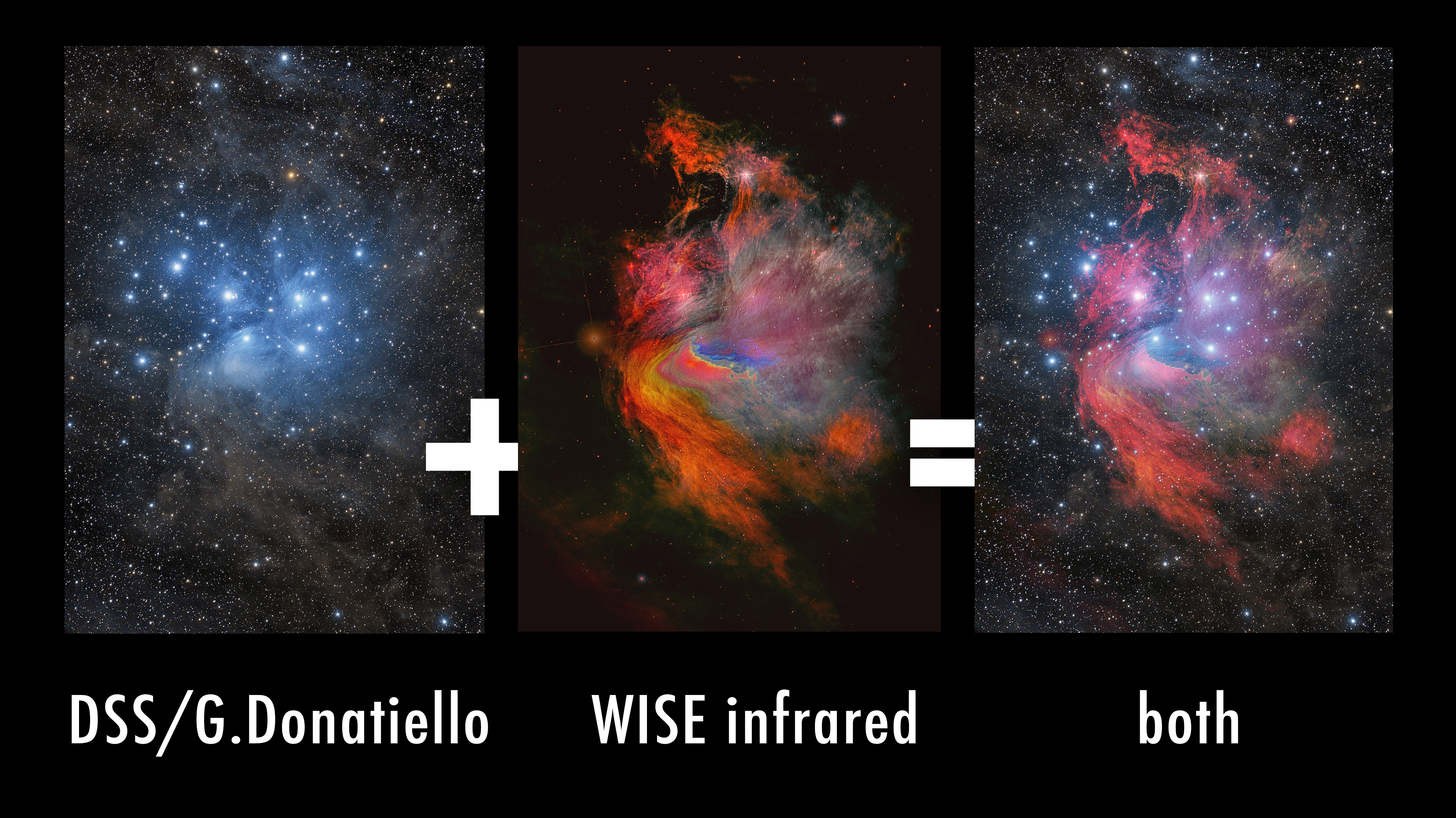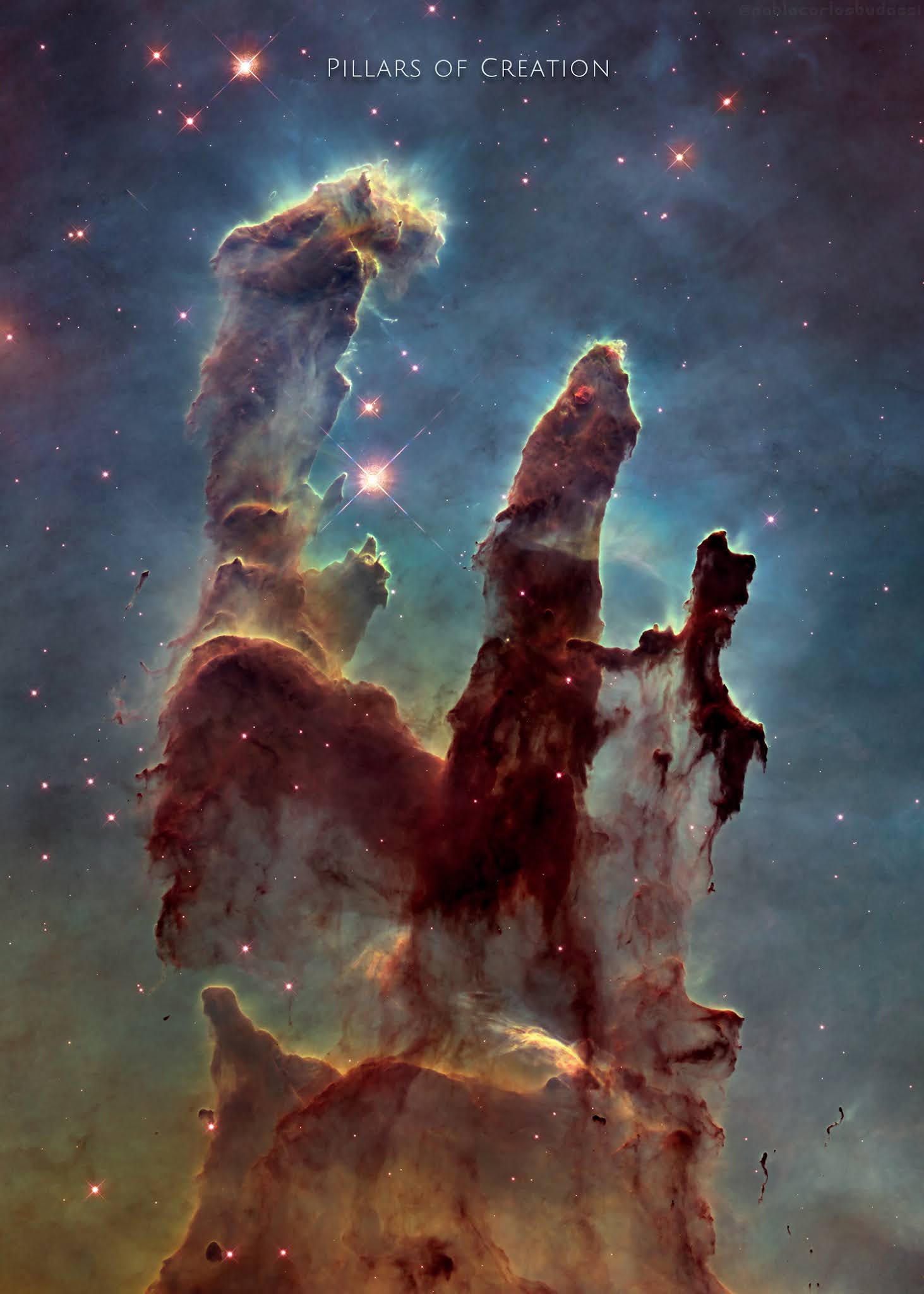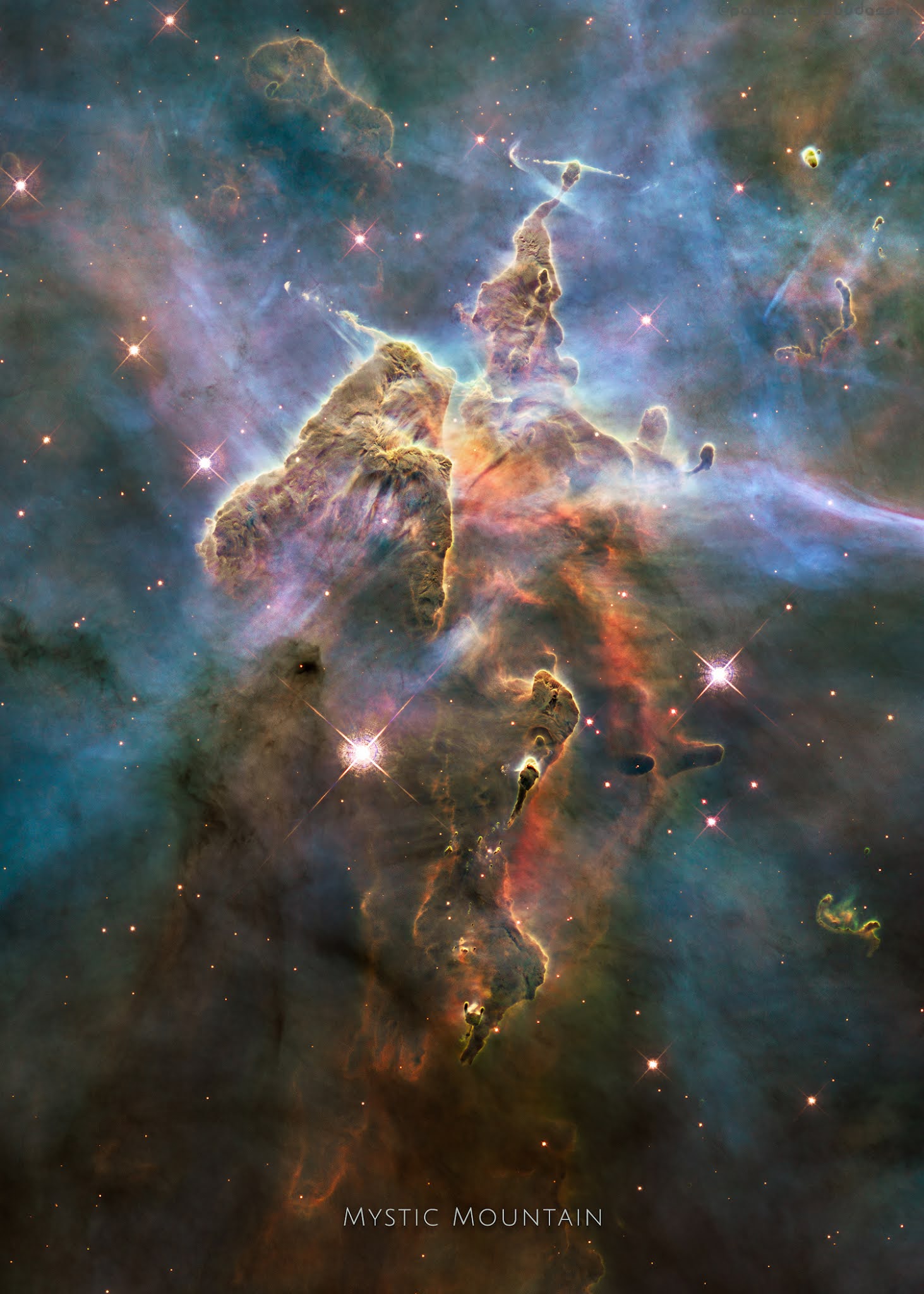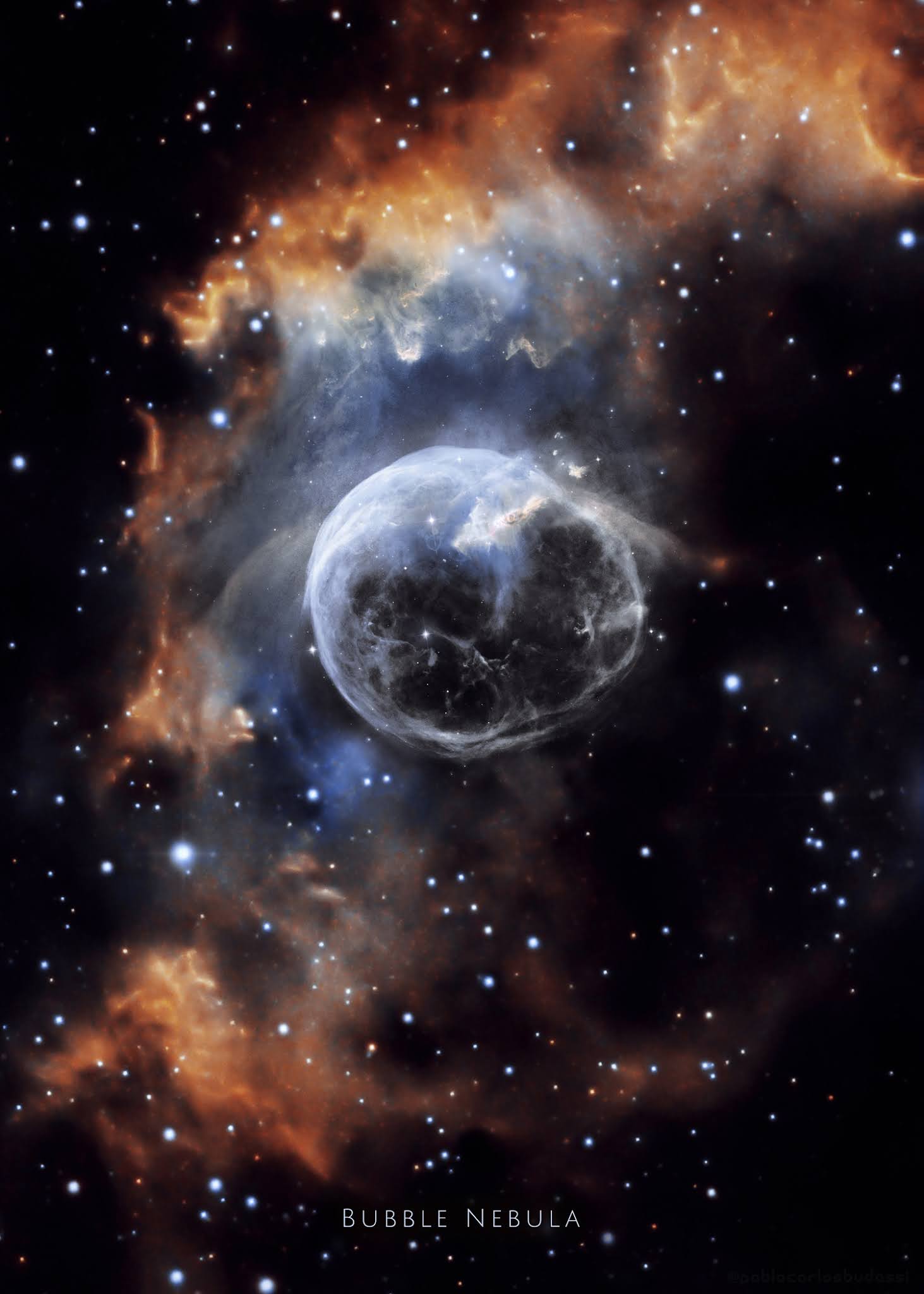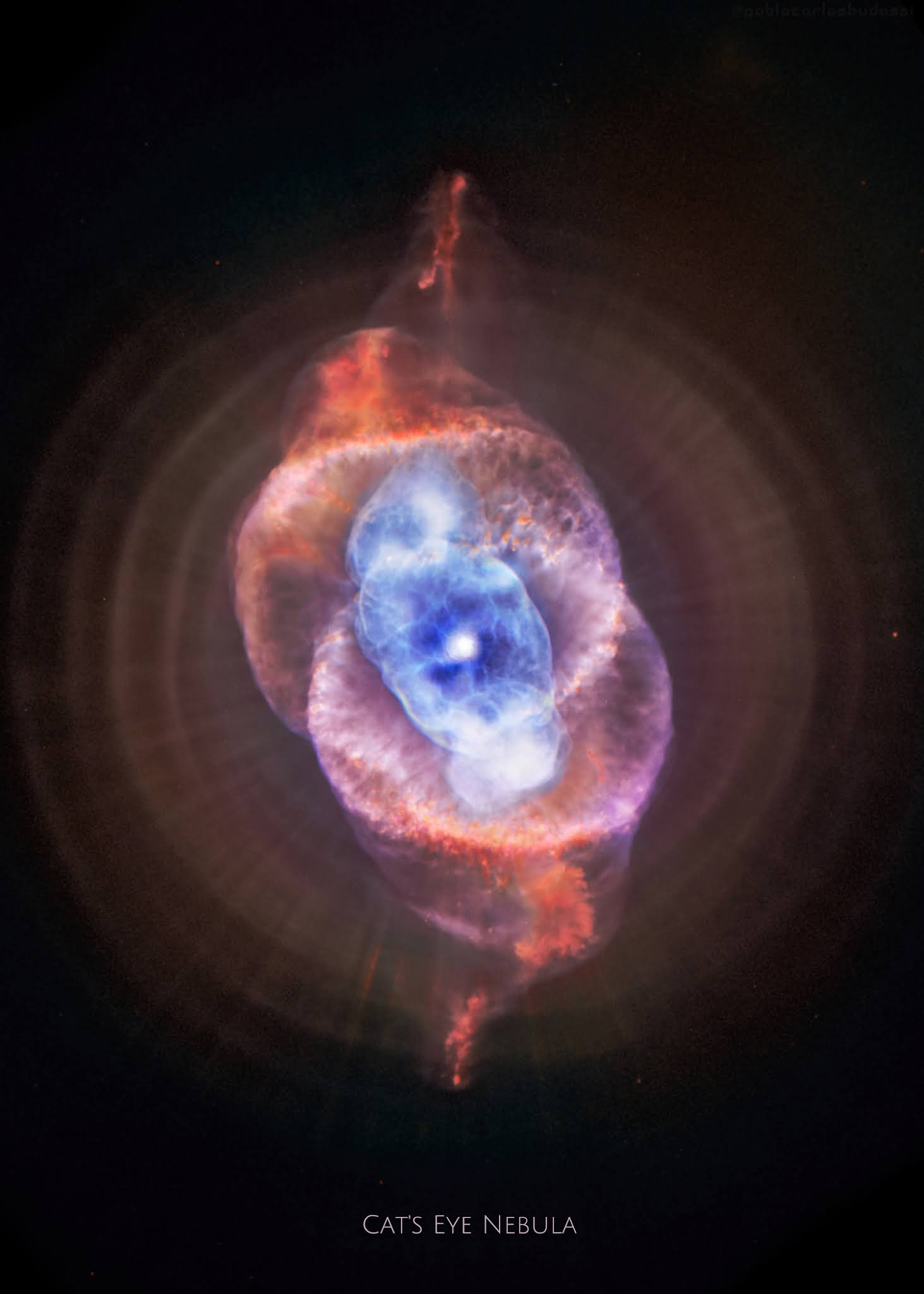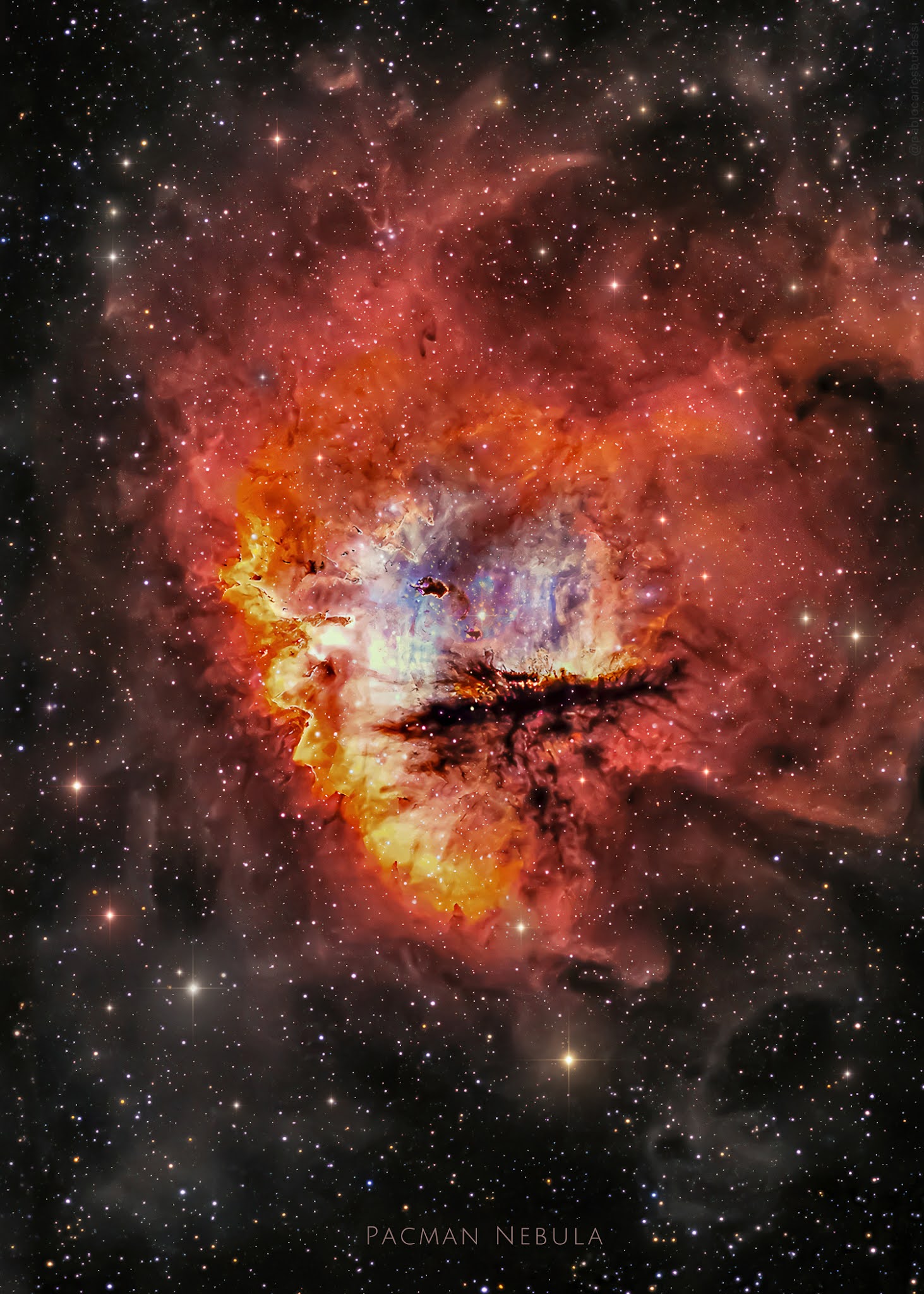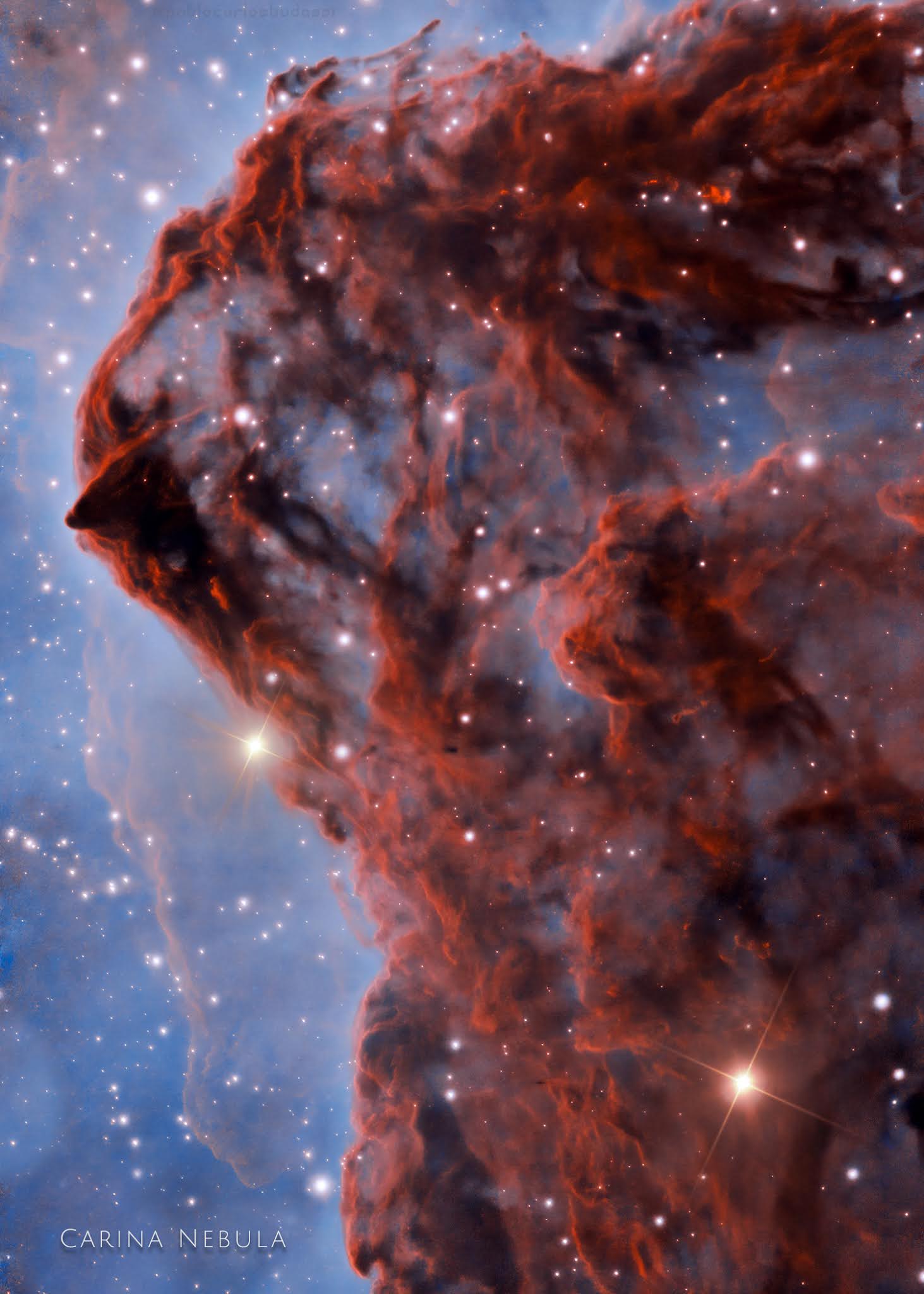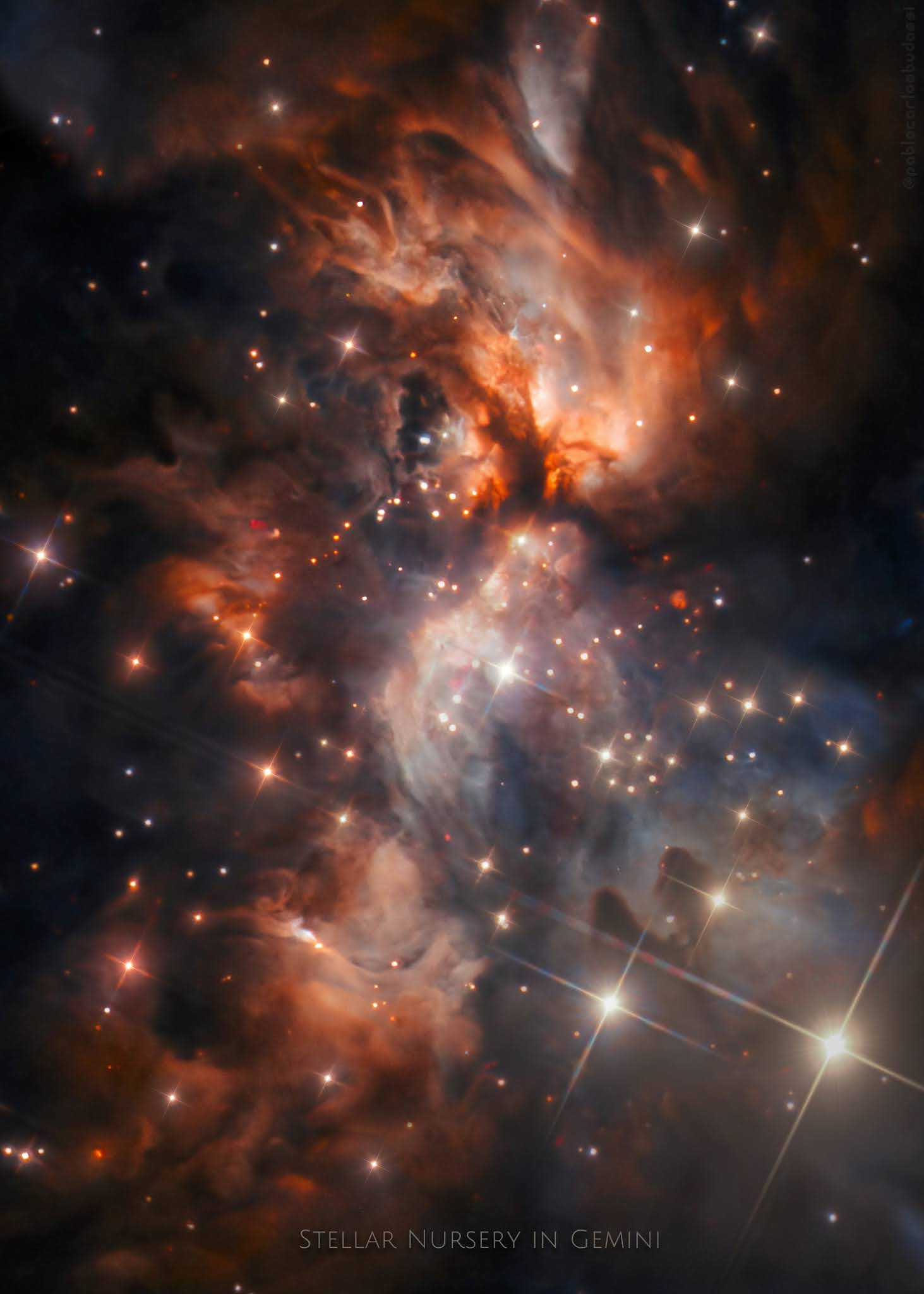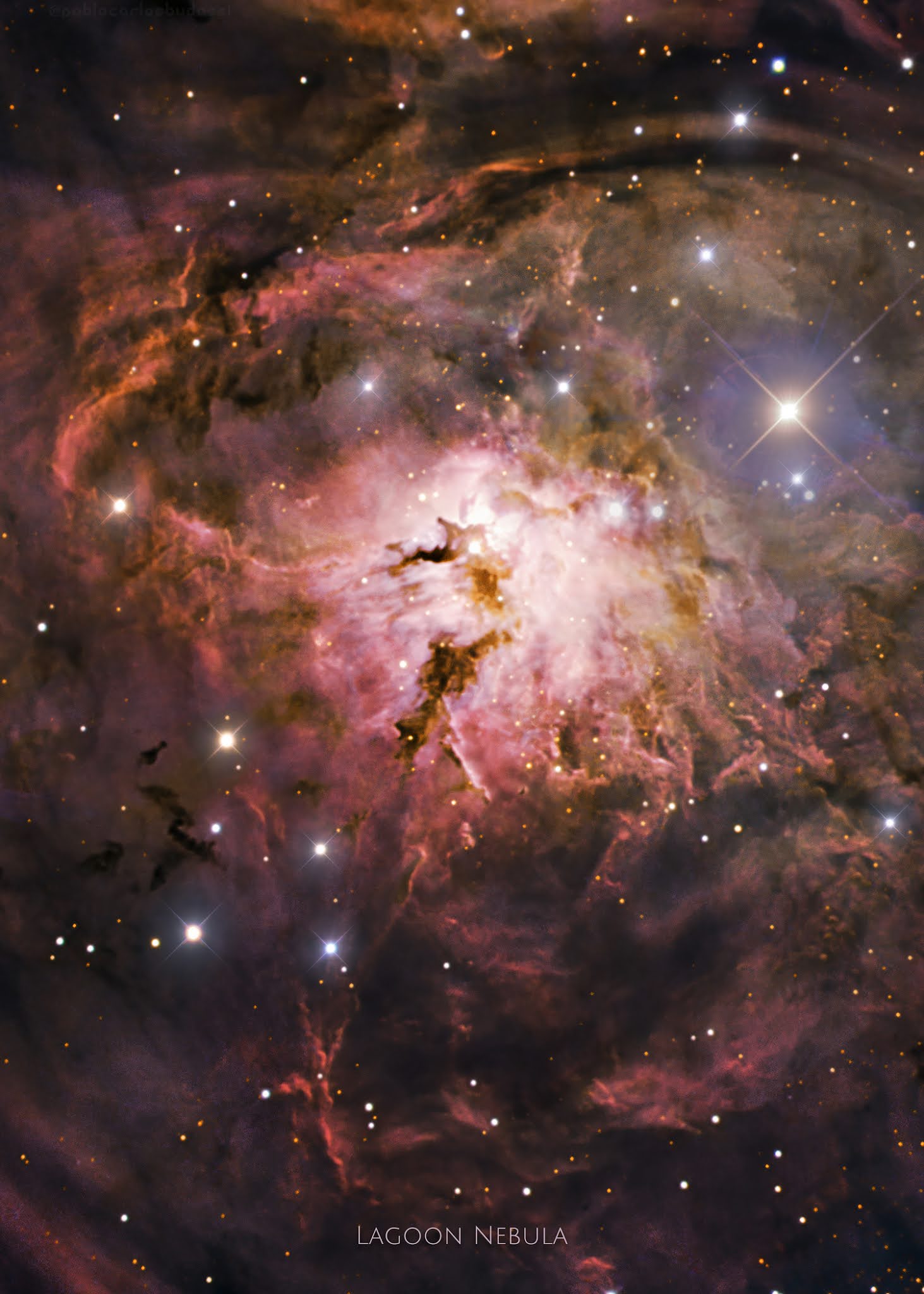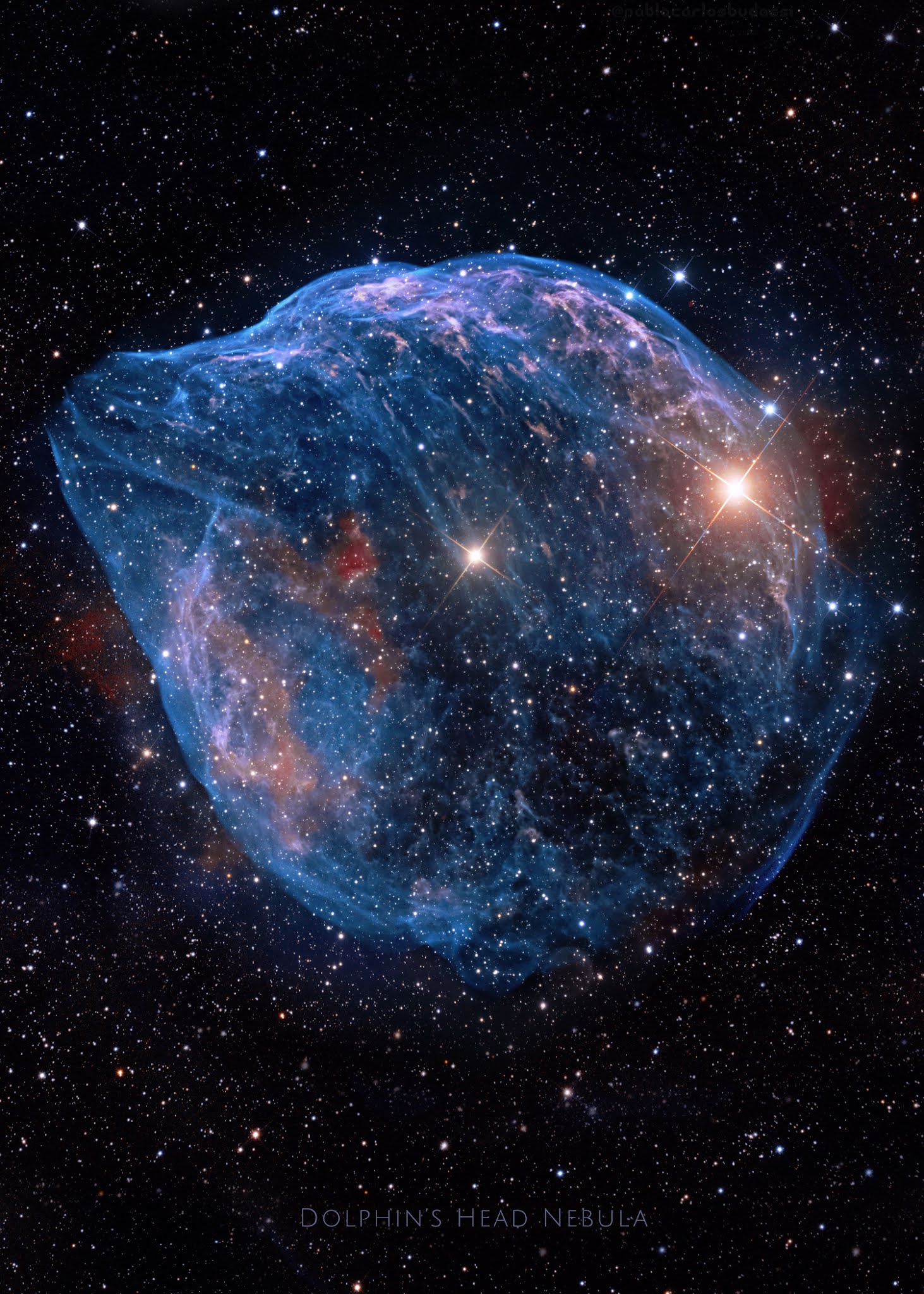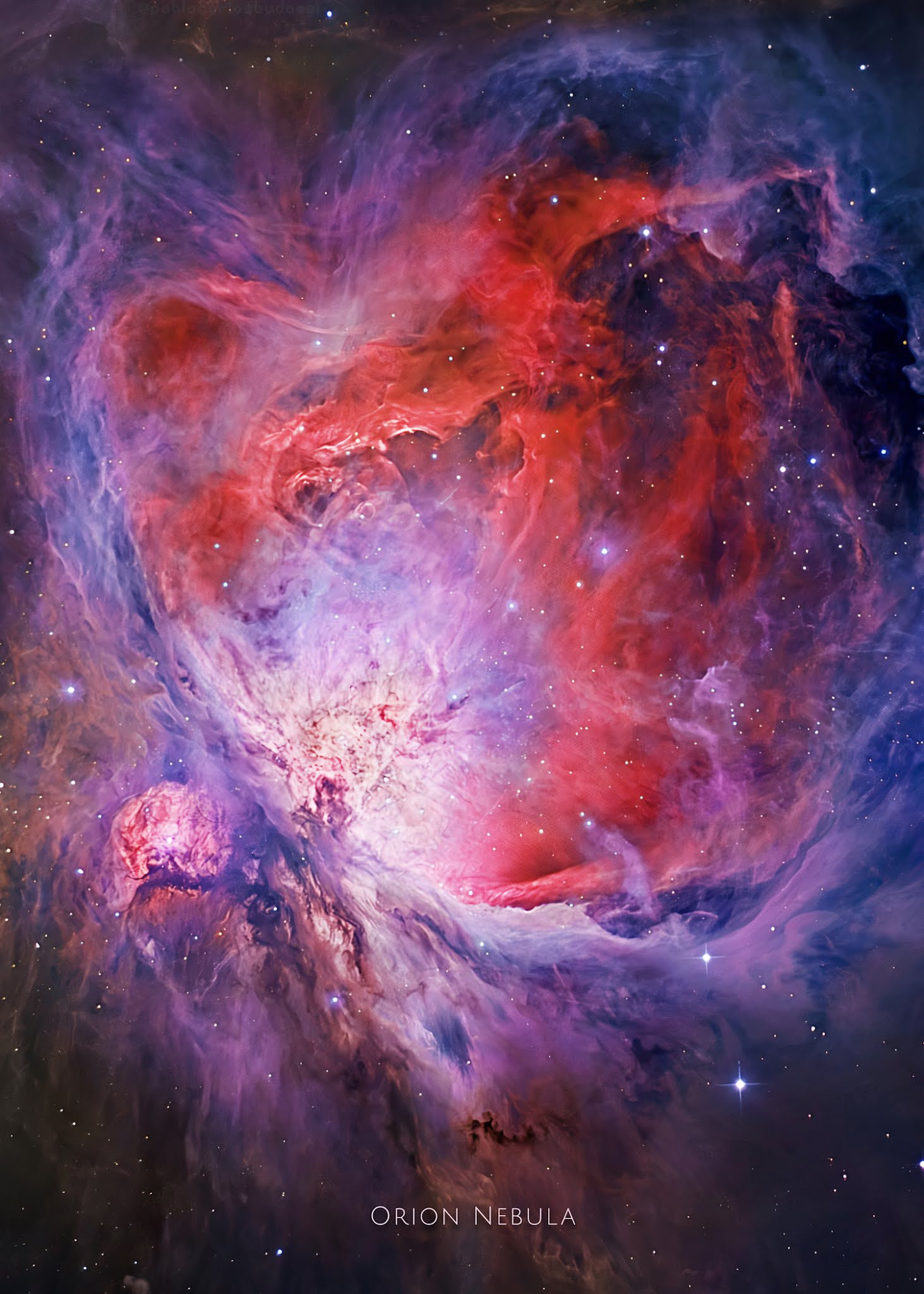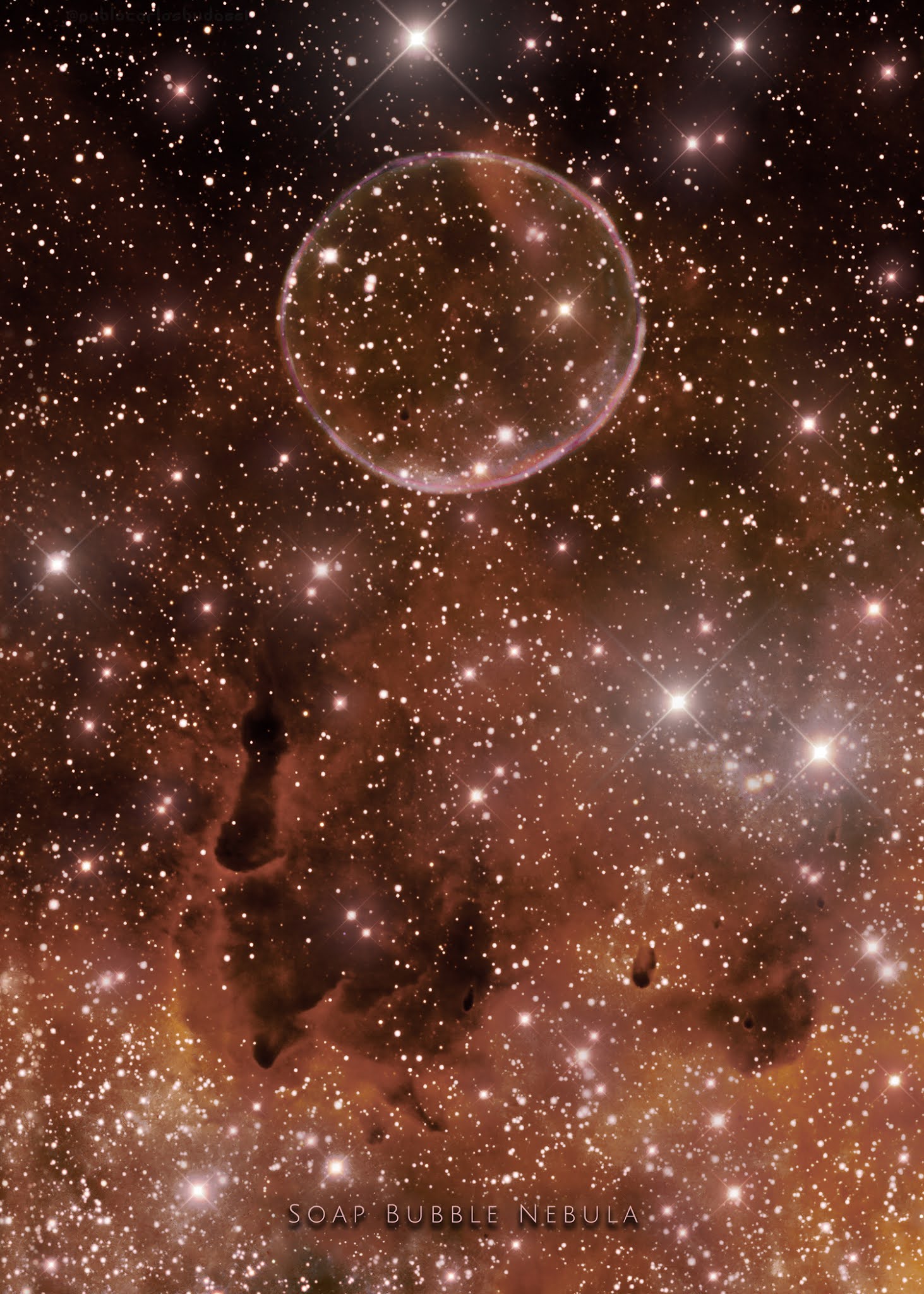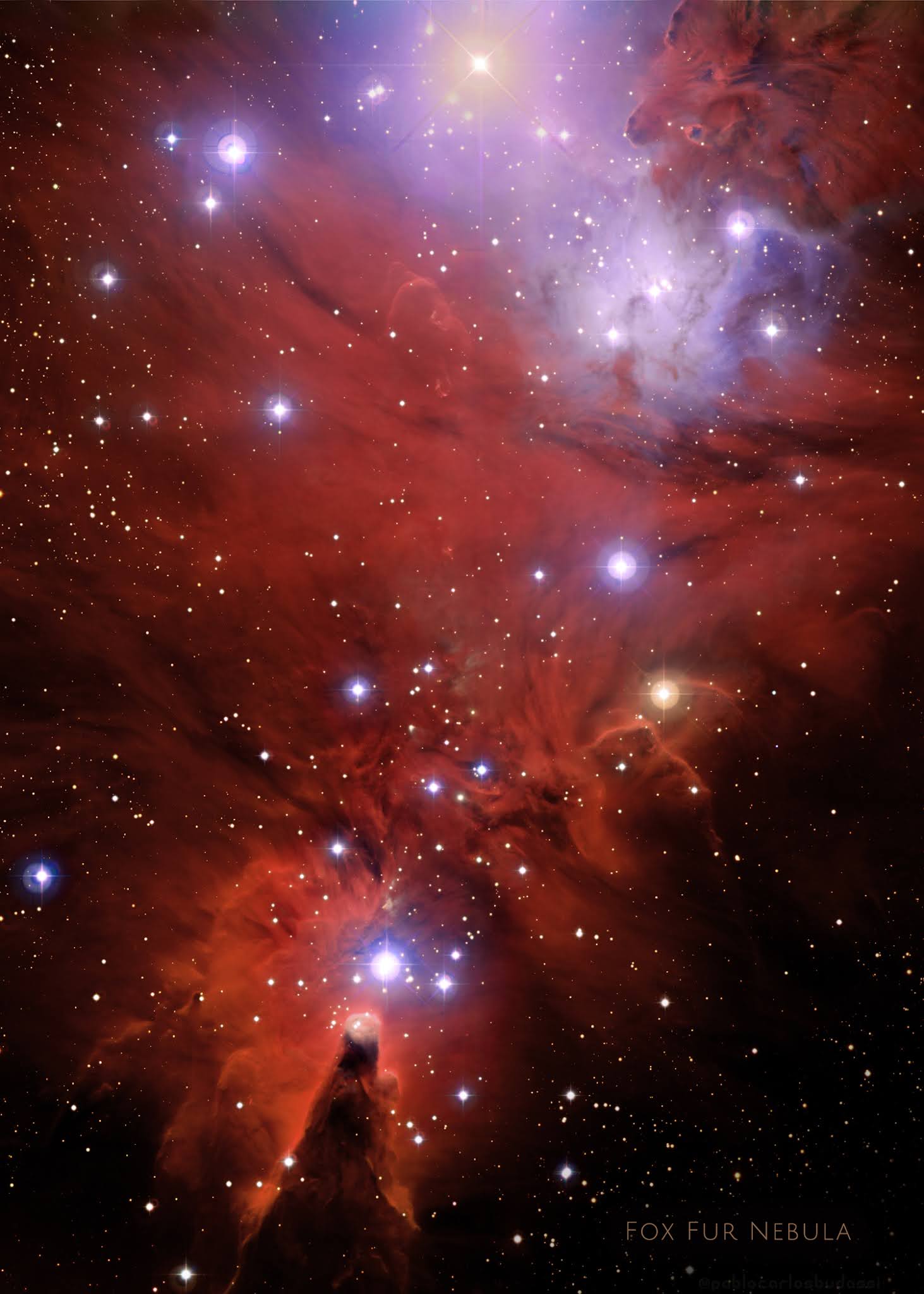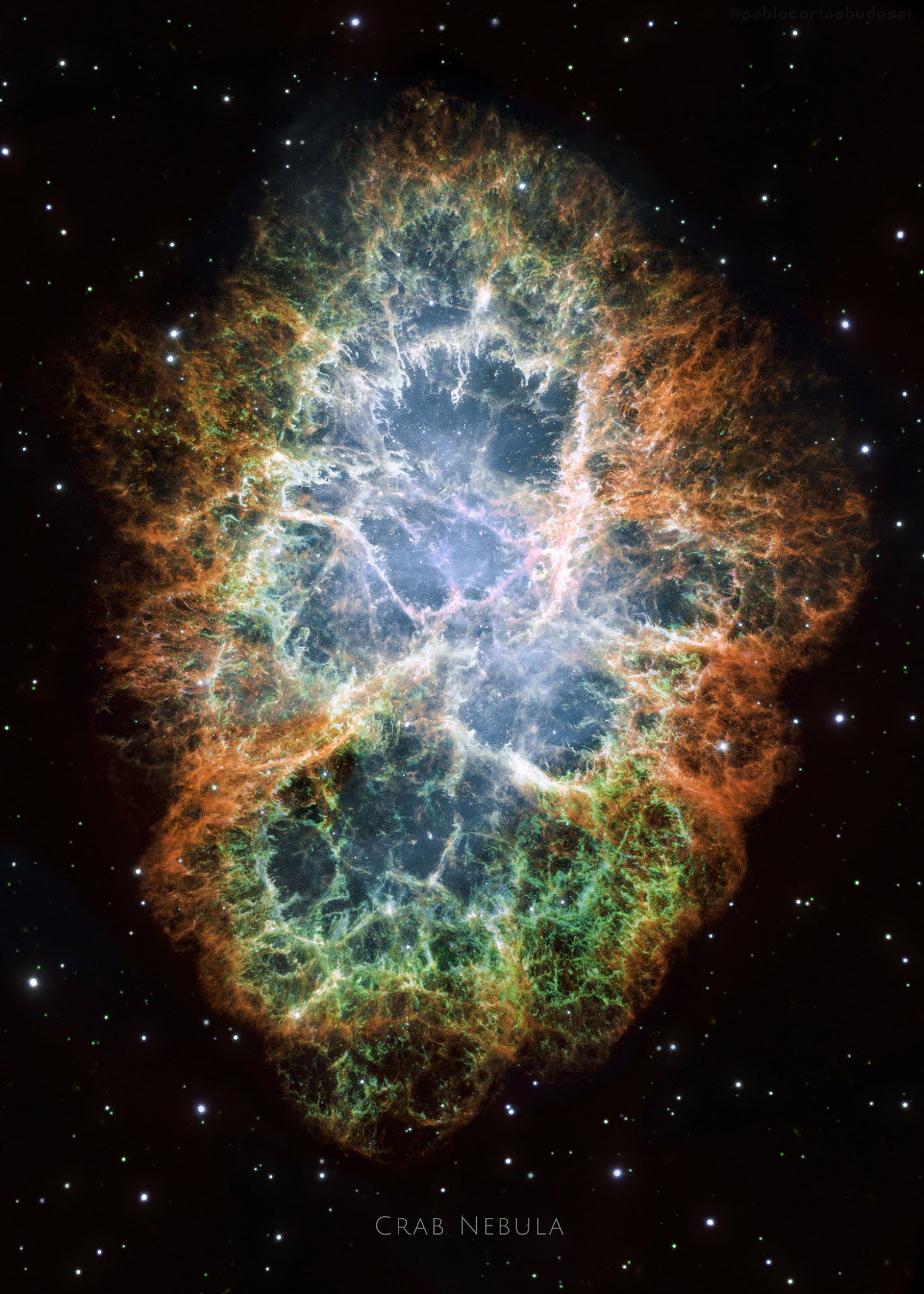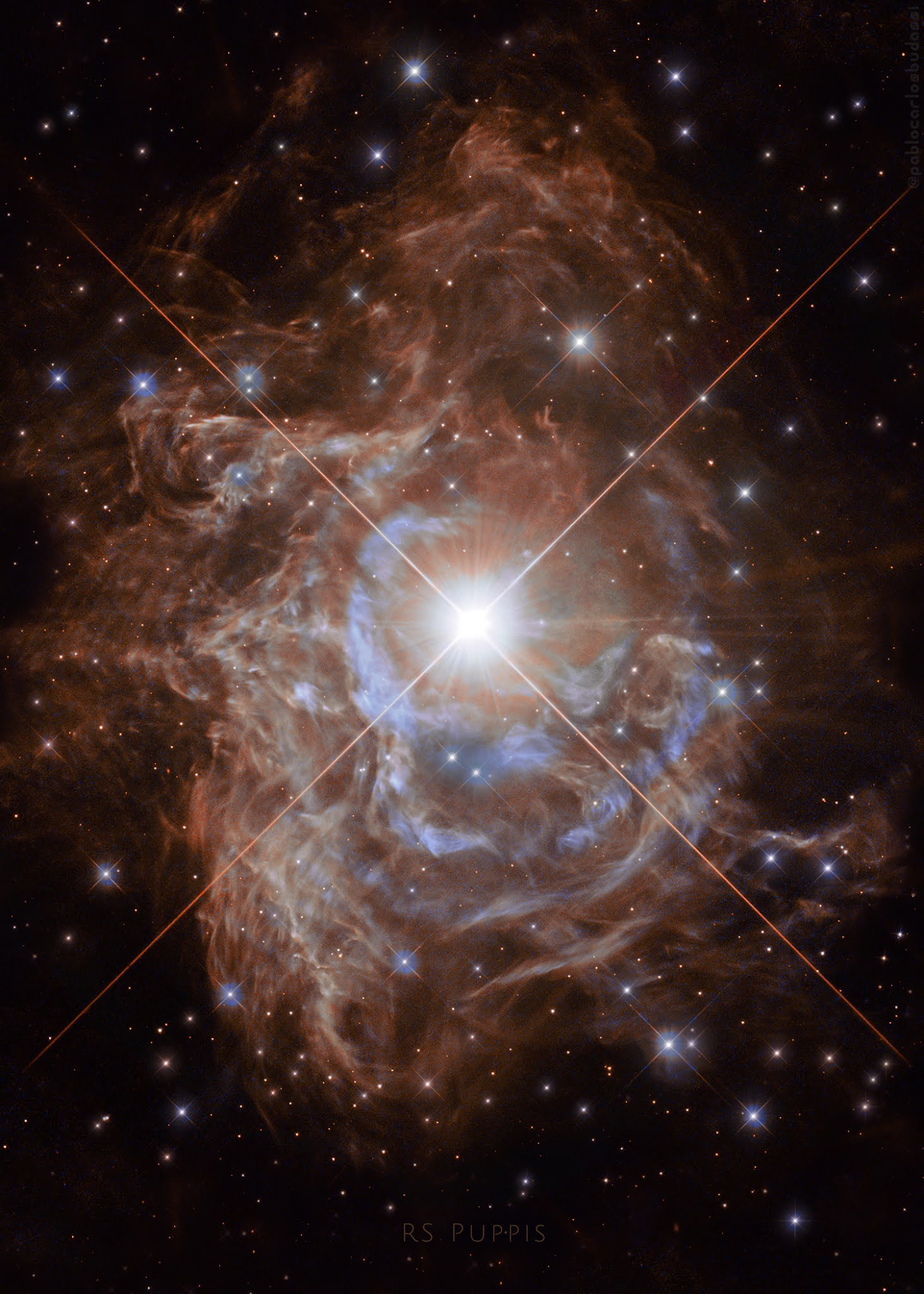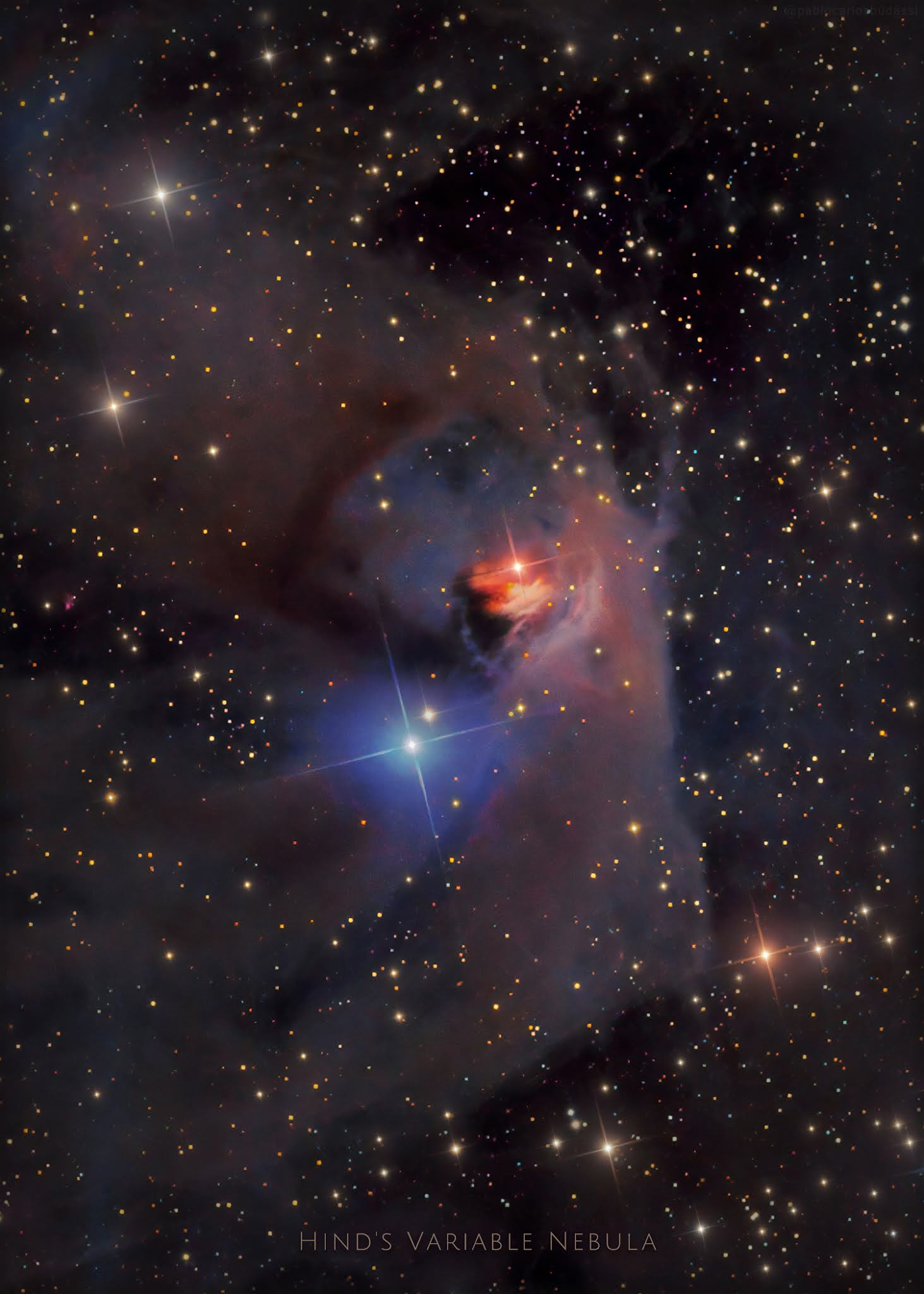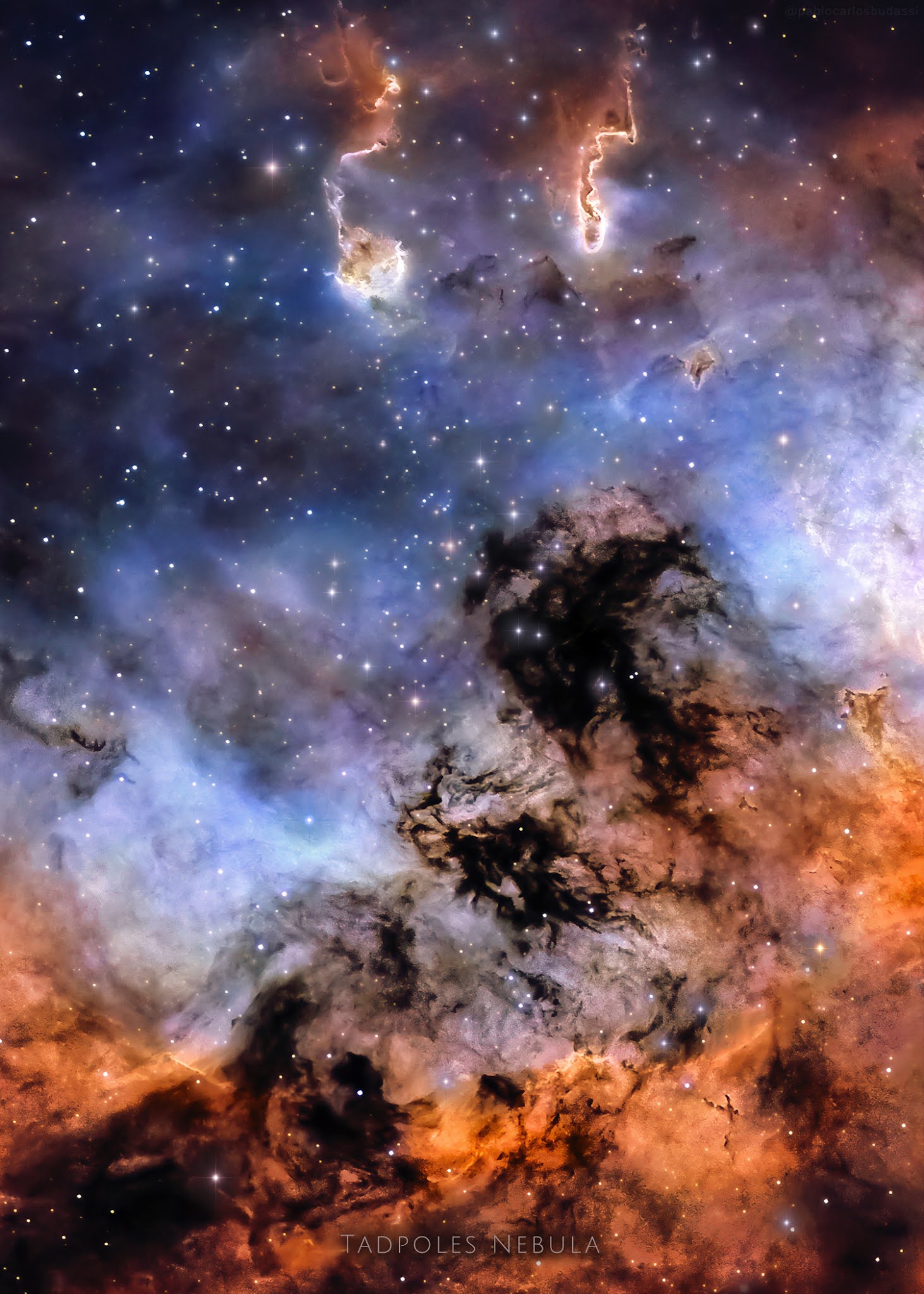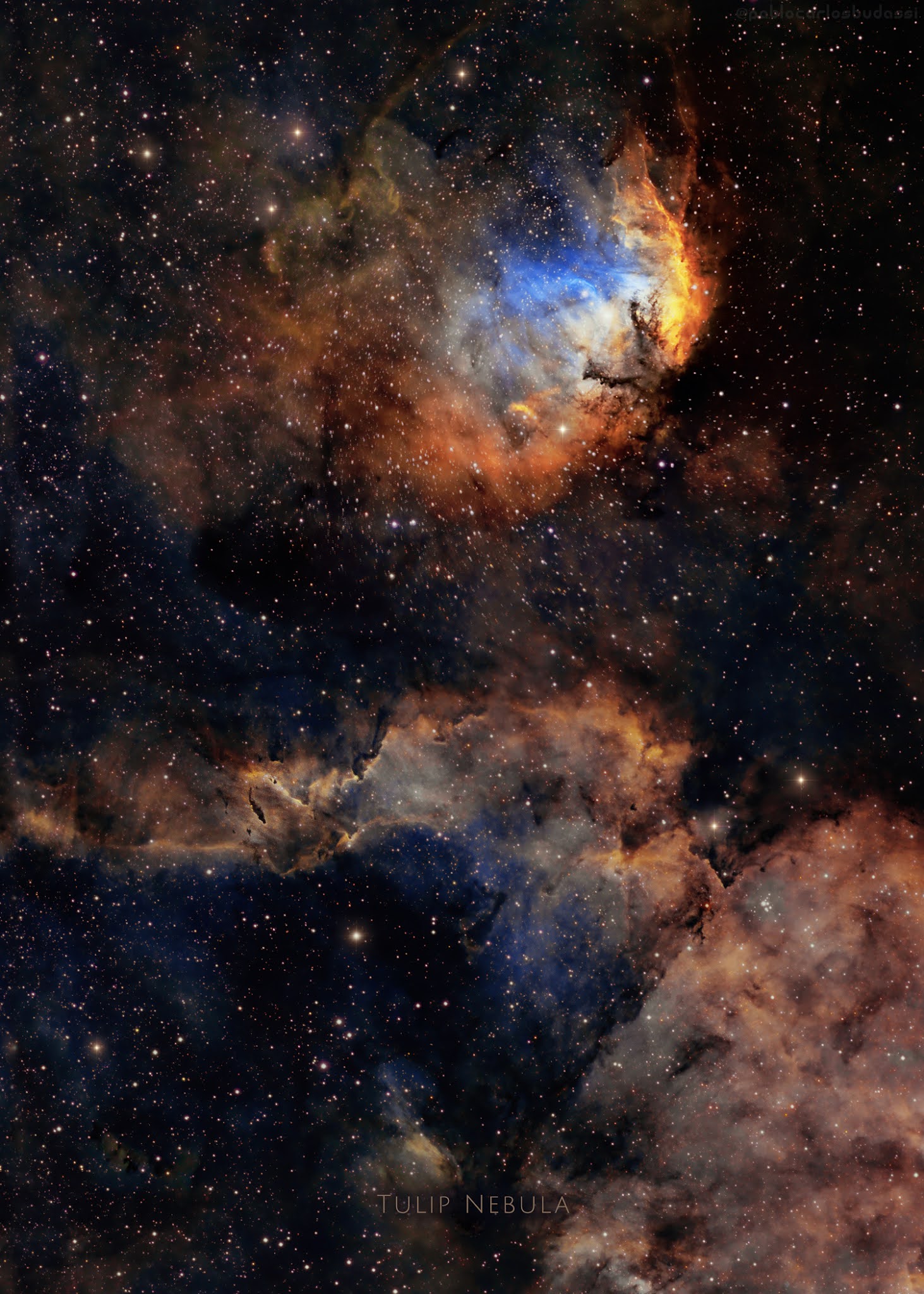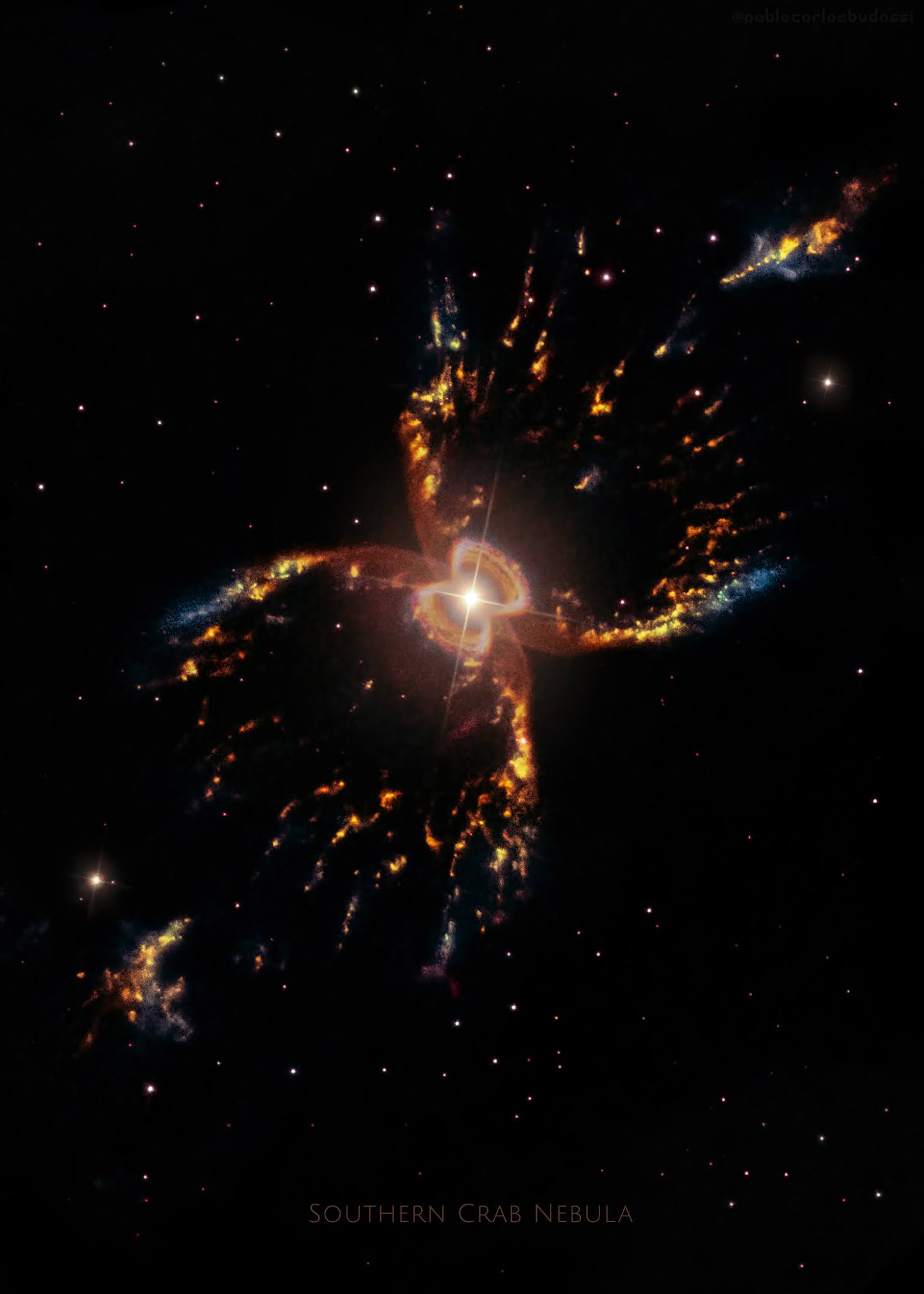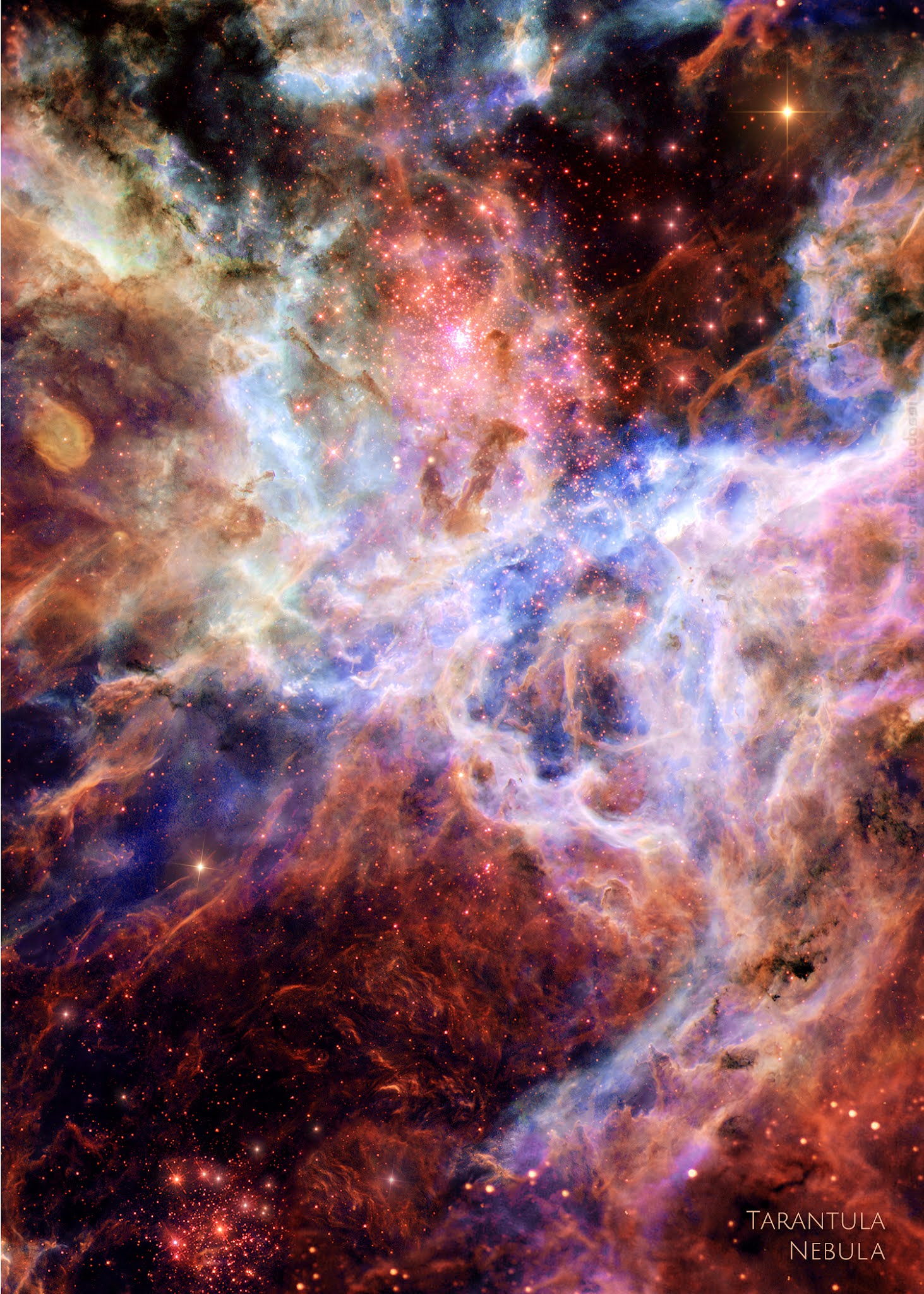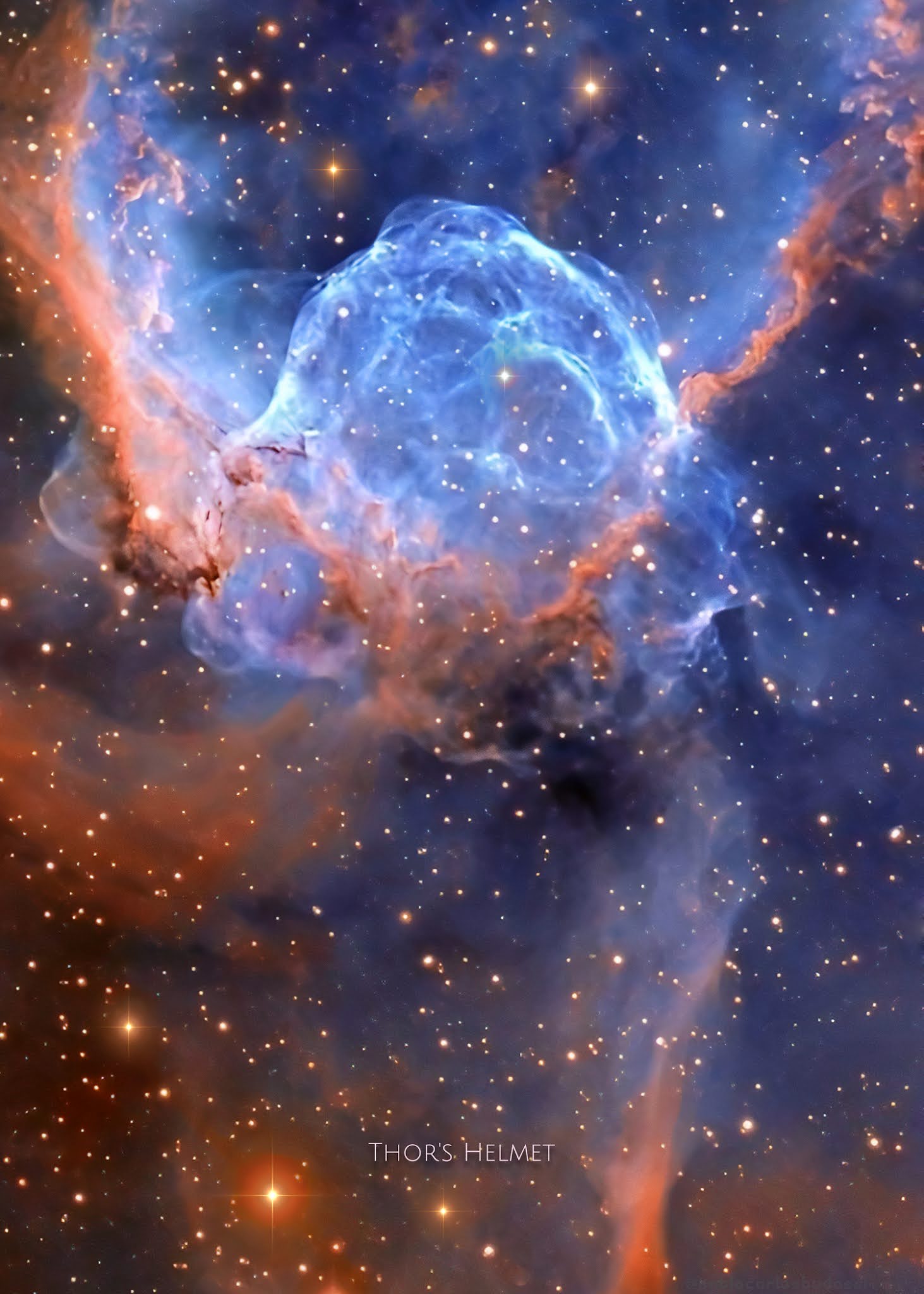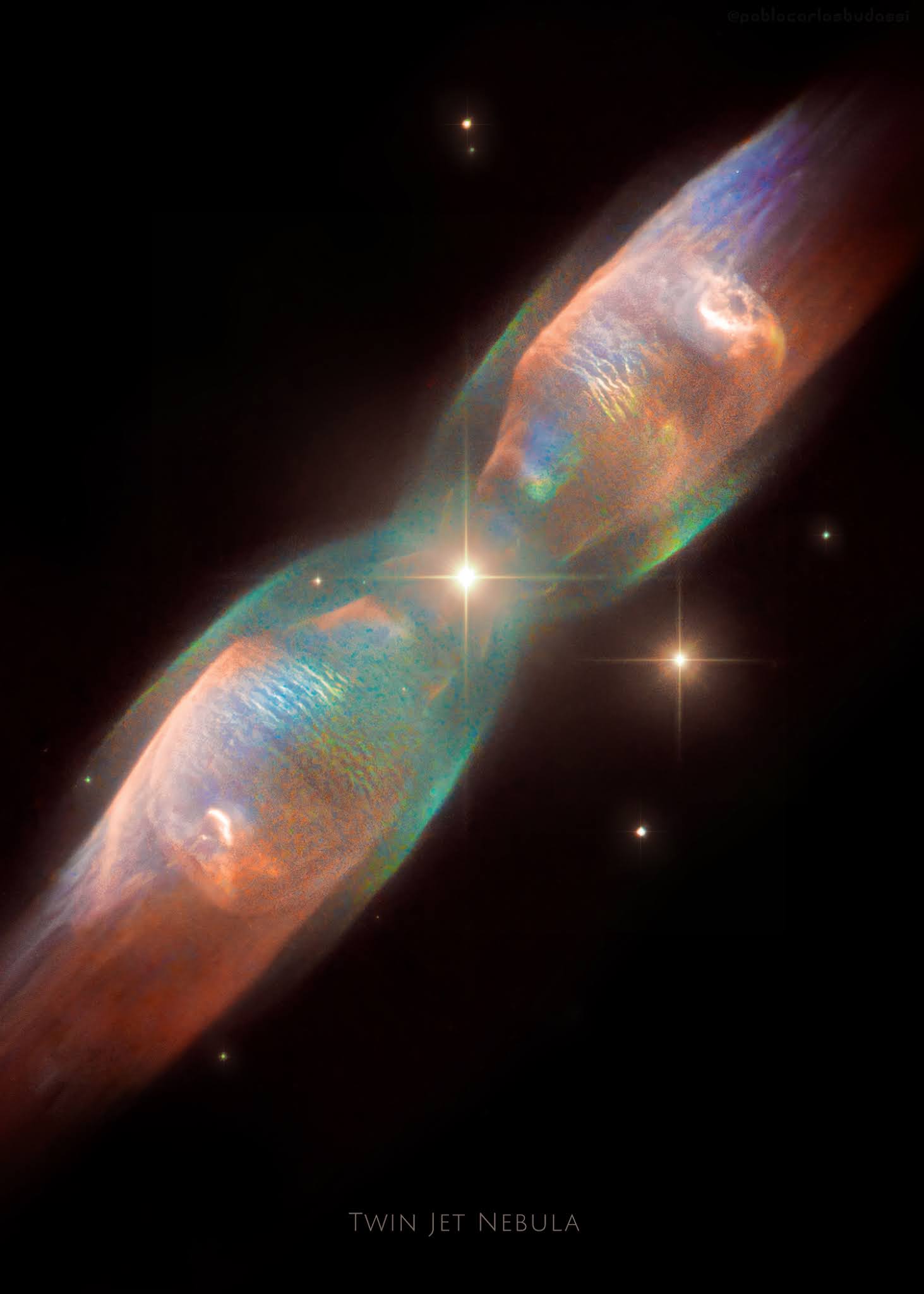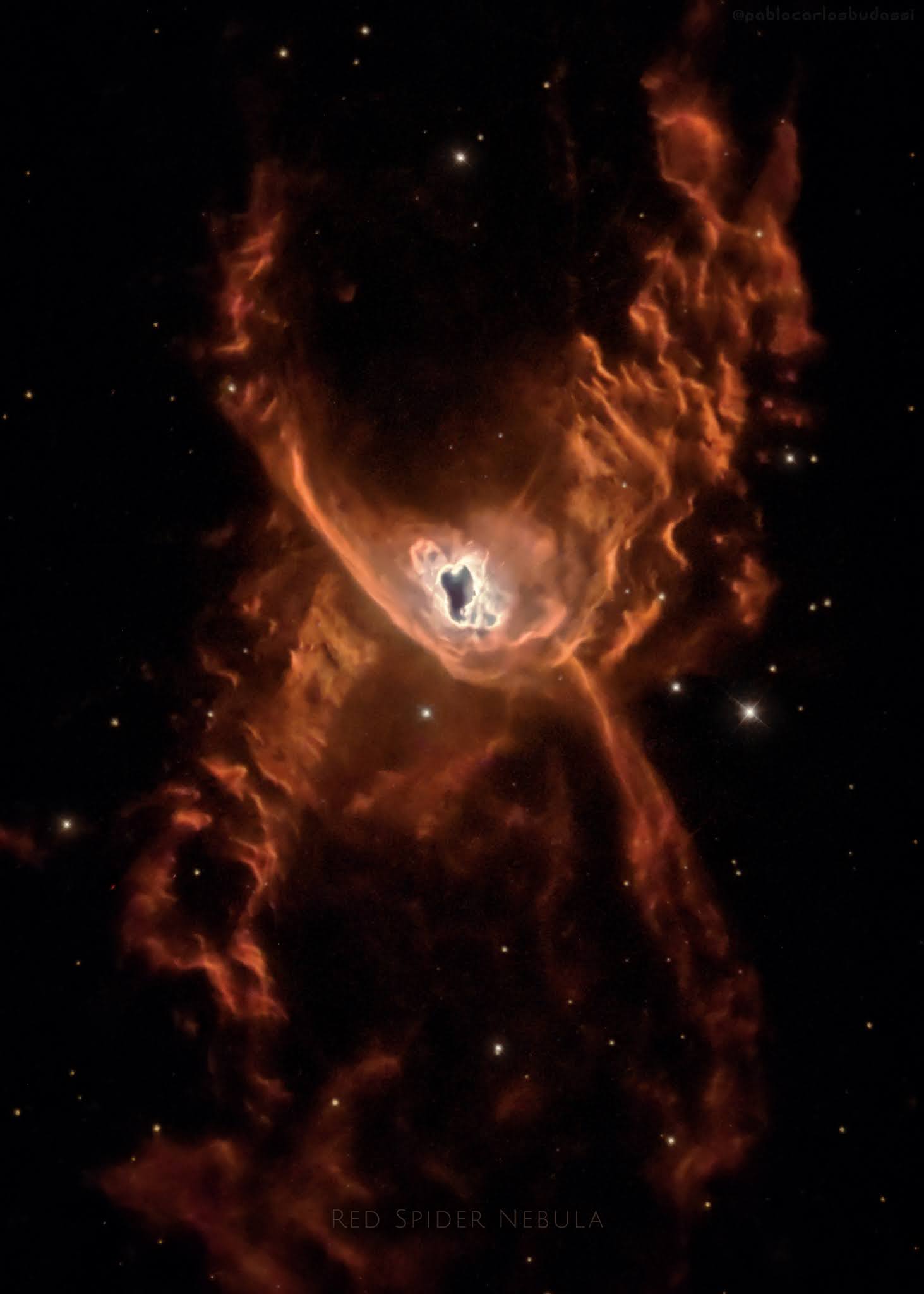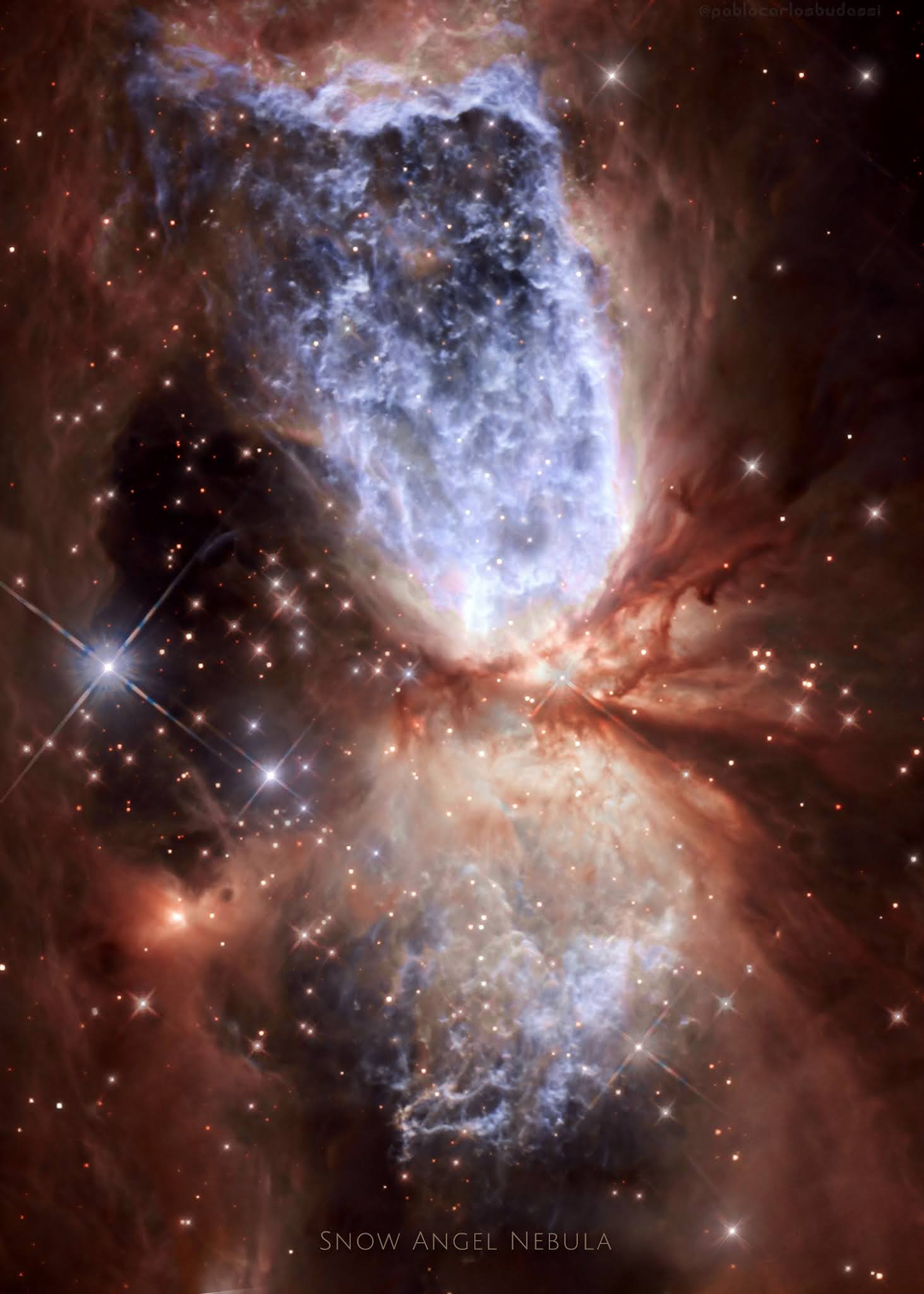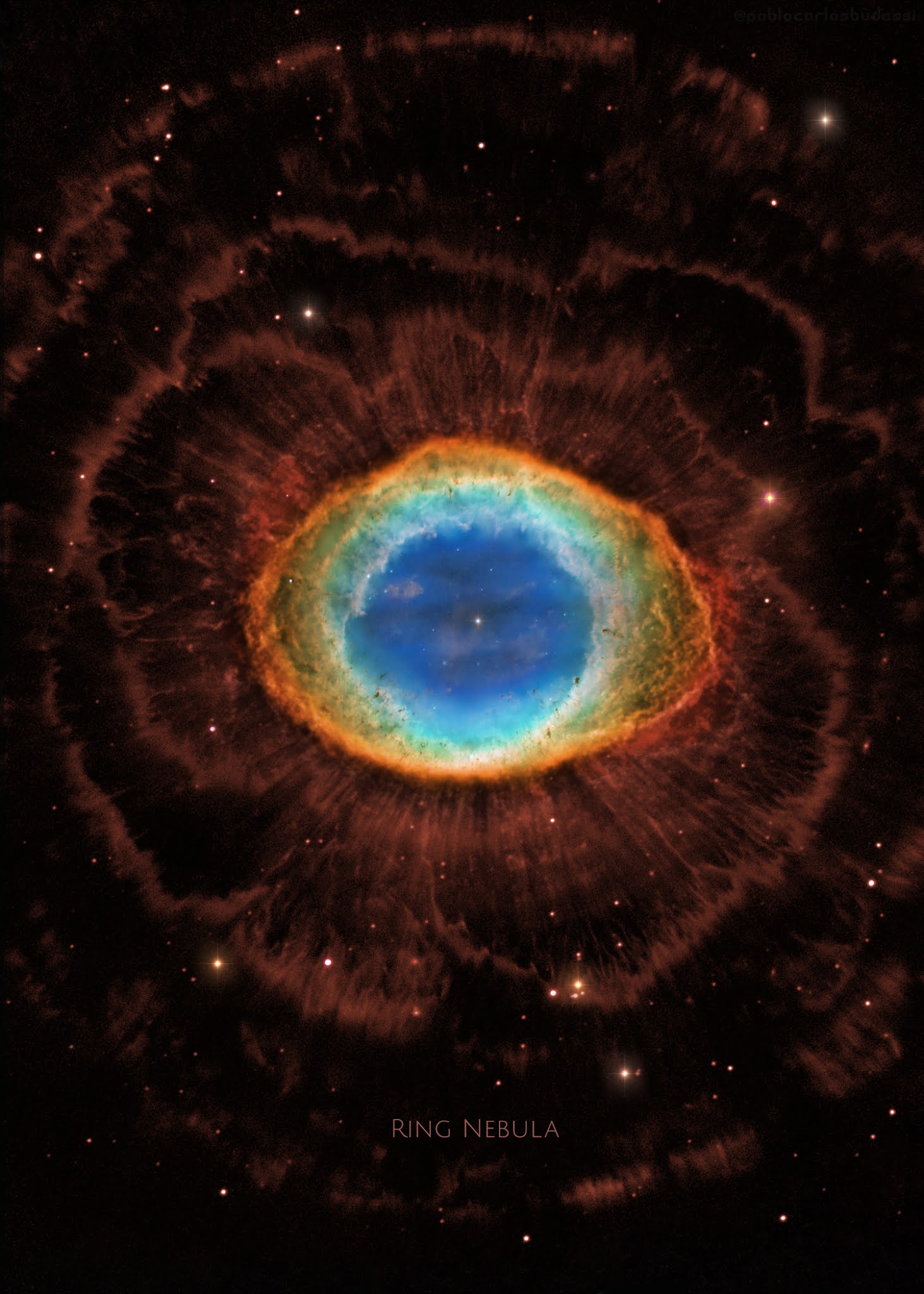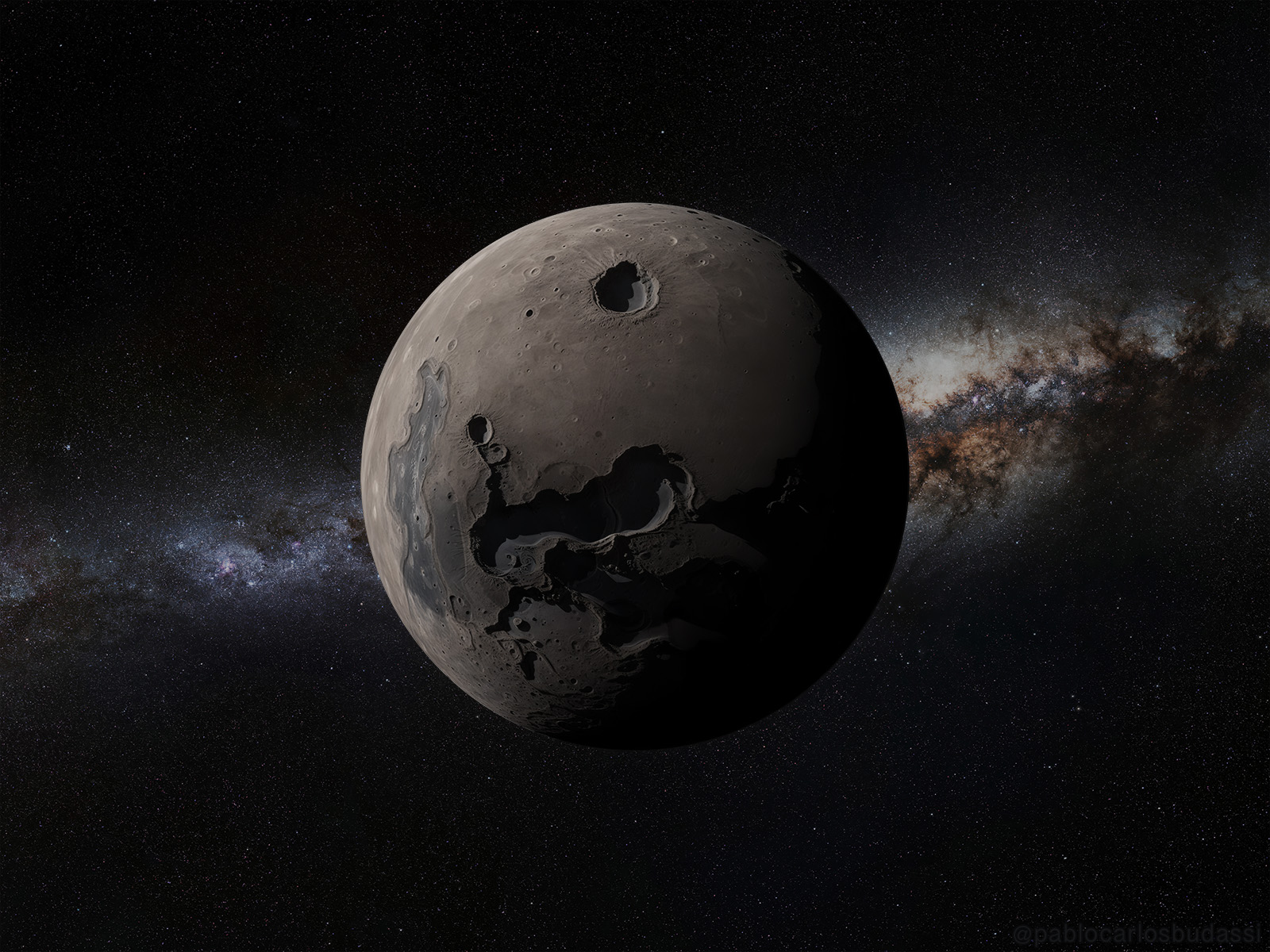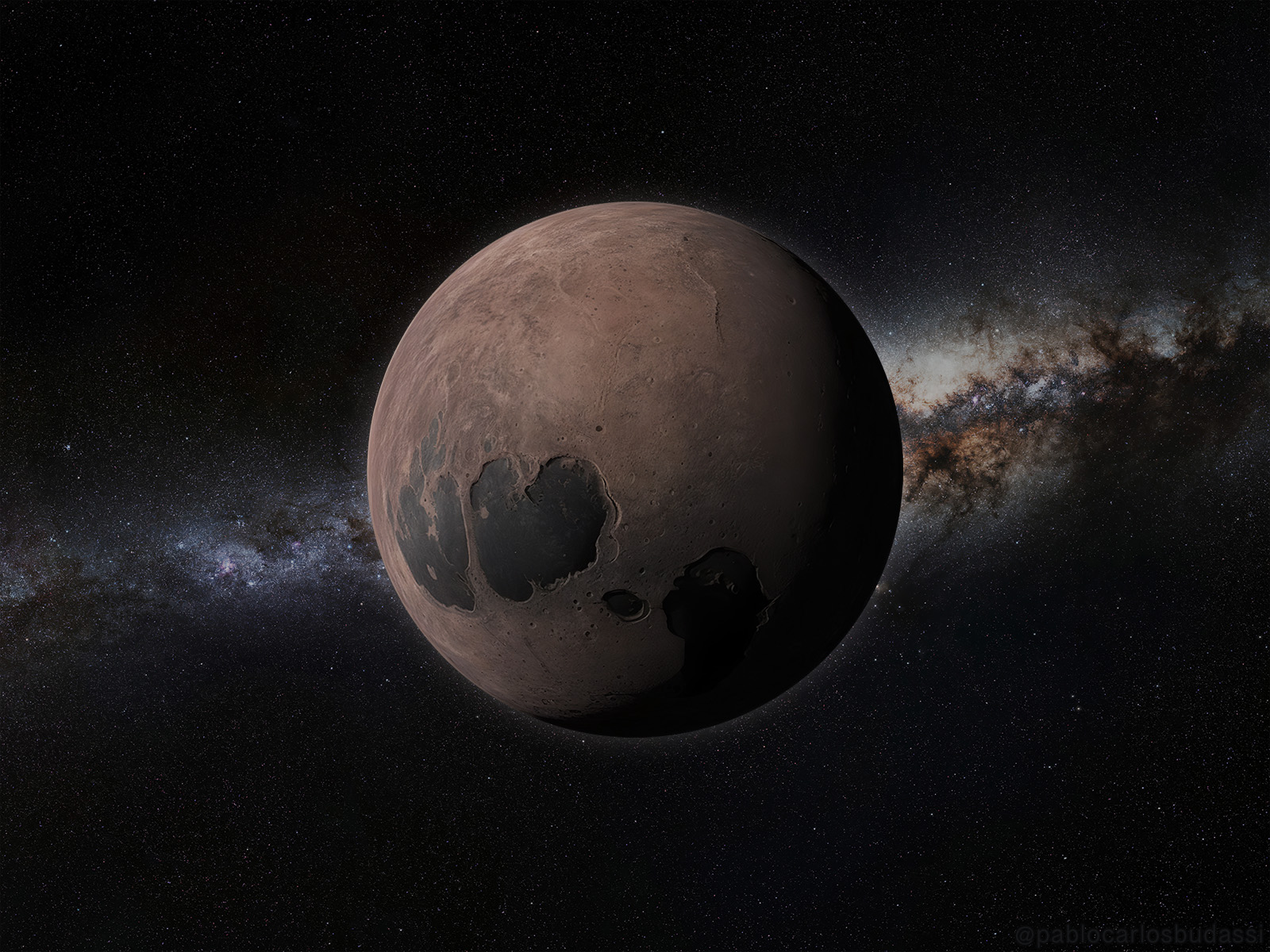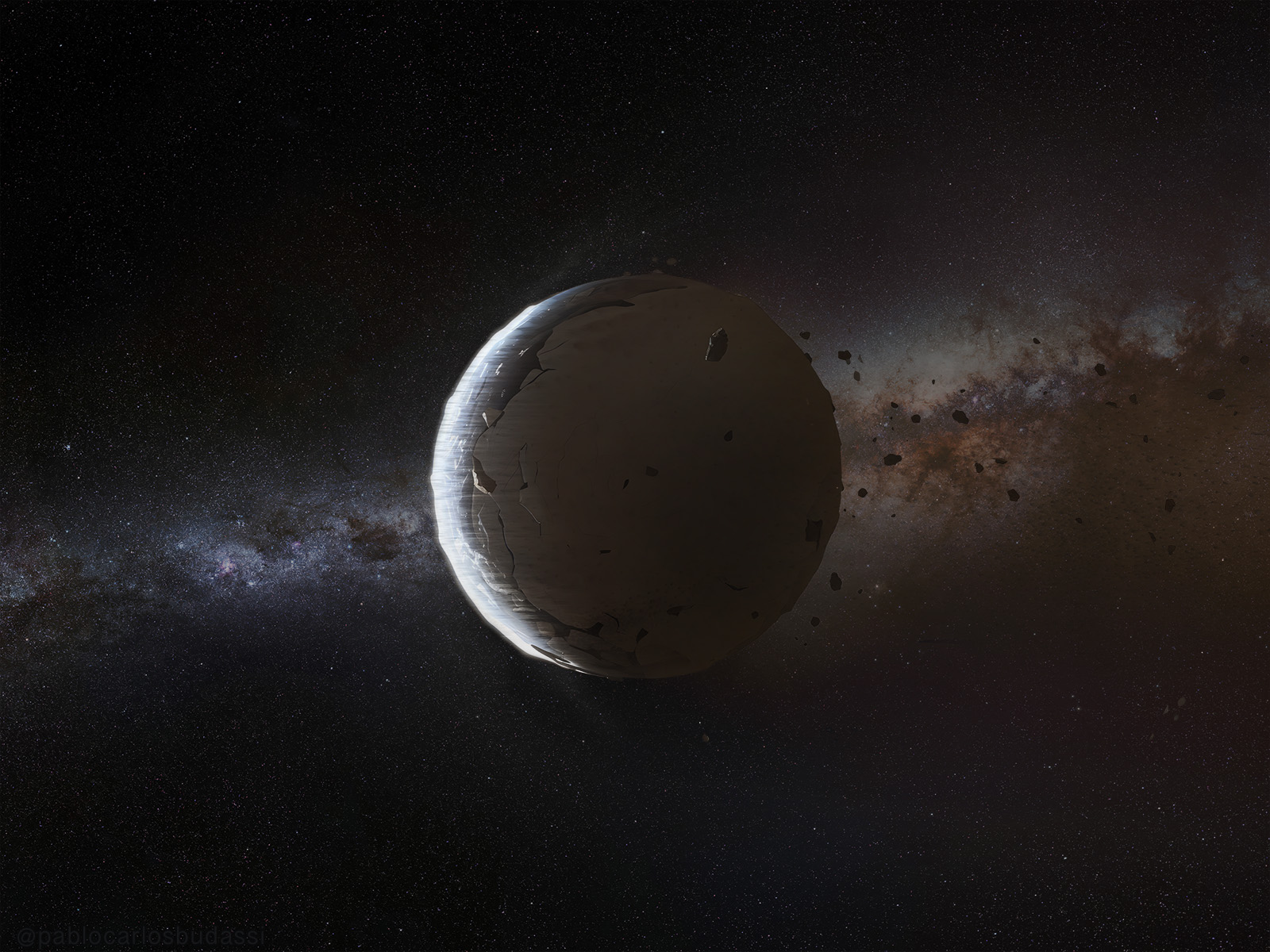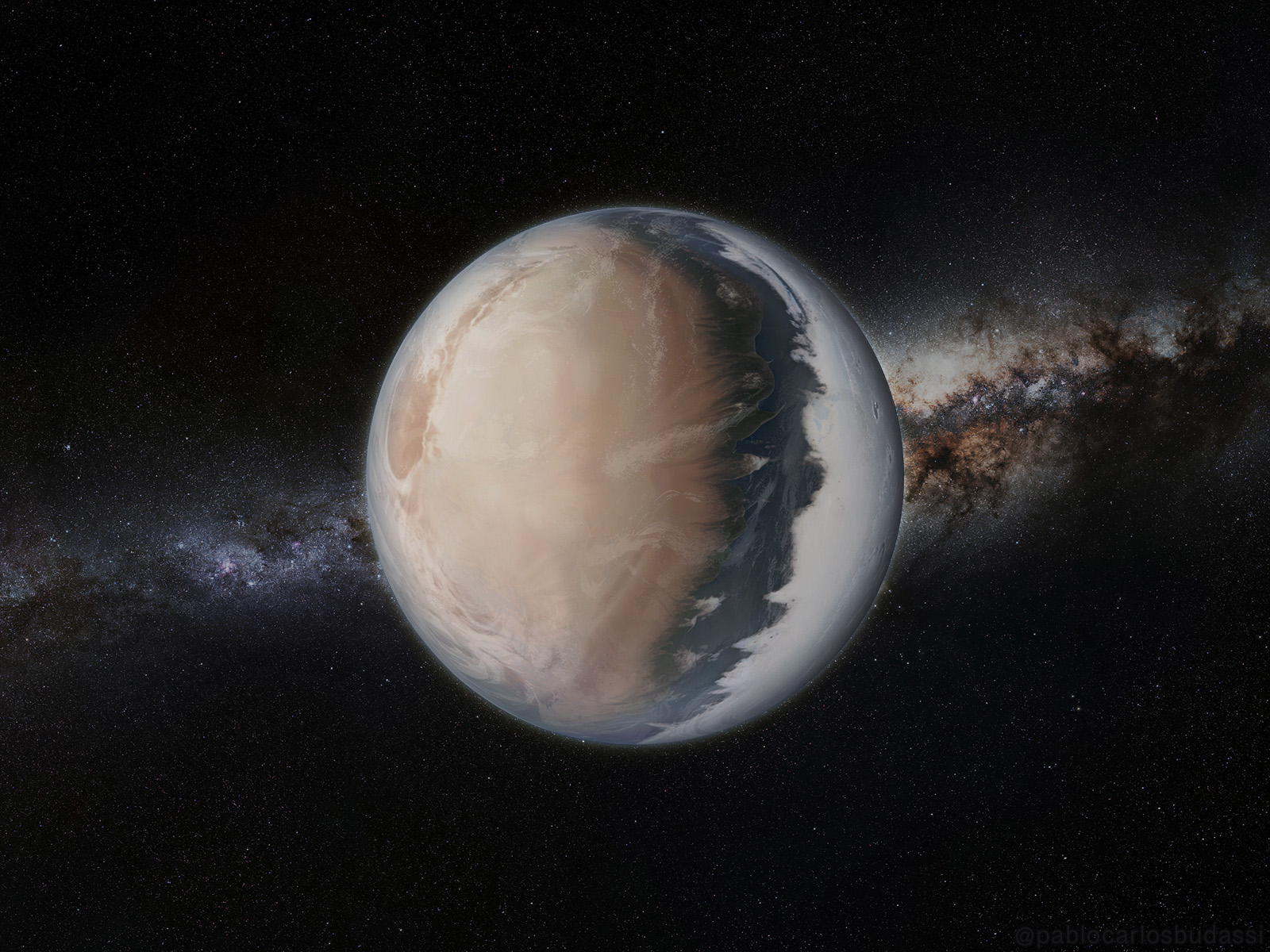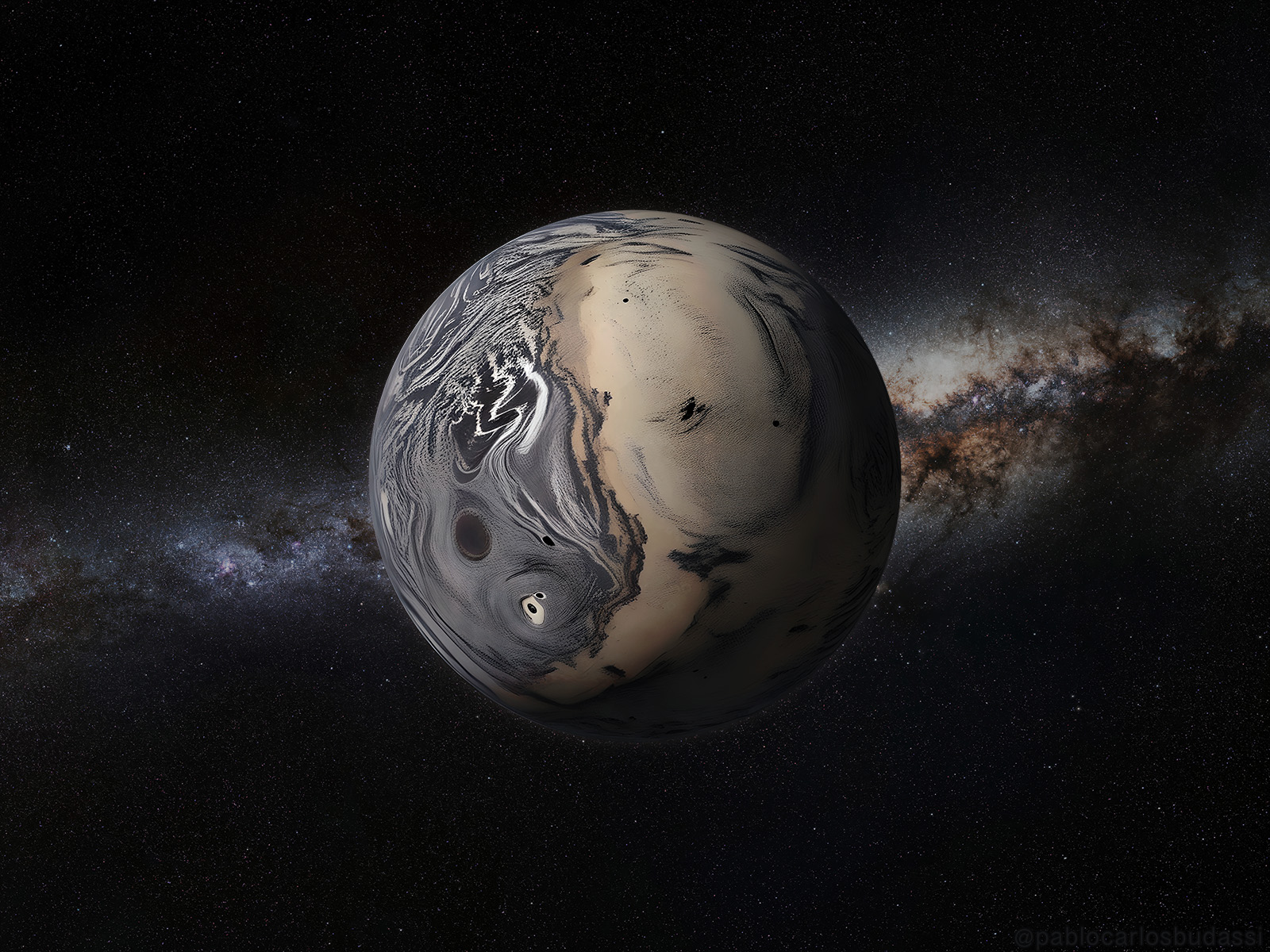
We post astro graphics and videos on socials
Our Video Series:
 Our shared astronomical knowledge was also curated into a single visual work titled
Our shared astronomical knowledge was also curated into a single visual work titledThe Celestial Zoo
Click on images to explore in HD >
High-quality artist prints, downloads, and books are available below. Acquiring these cosmic treasures also supports the original creators.
⇊ find below explorable visuals to safari the Celestial Fauna as never seen before ⇊

OBSERVABLE UNIVERSE LOGARITHMIC ILLUSTRATION 2025 (English annotated)
Buy Print [$13] Poster [$14] Quality metal plate [$44] / annotated plate / Other Products / on fineartamerica

This 2025 poster version has sheets for different celestial objects and regions in the Observable Universe. Each section comes with specific data about the objects, including distances, sizes, and cool facts. It is an excellent educational tool, as information-dense as it can be, with a carefully chosen summary of everything we can observe.
Metal plate ✧ Poster ✧ Print ✧ Spiral Notebook ✧ Other Products ✧ Download HD
 OULI Classic (2018)
OULI Classic (2018)

This unique original infographic explains in detail the appearance of an accreting black hole. Side and top schemes show the path of the light rays bent by gravity and the trayectory from each part of the black hole to the observers POV.
The poster illustrates the fascinating optics surrounding black holes, emphasizing how their extreme gravity impacts light and shapes the appearance of the accretion disk. Due to the black hole’s immense gravitational pull, light emitted by different regions of the disk appears skewed, resulting in a distinct misshapen visual.One notable phenomenon is Doppler Beaming. Light from the glowing gas in the accretion disk appears brighter on the side where material moves toward us and fainter on the side moving away. This variation is due to the relativistic speeds at which the gas orbits the black hole.
The Disk’s Far Side Dome effect occurs as the black hole’s gravitational field alters the light paths from the far side of the disk, producing a dome-shaped appearance. Meanwhile, the Black Hole Shadow—an area roughly twice the size of the event horizon—forms due to the lensing and capture of light rays by the black hole.
The poster also highlights the Photon Ring, a ring of light composed of distorted images of the disk. These images are created by light orbiting the black hole two, three, or more times before escaping toward us.
Overall, the poster captures the mind-bending dance of light and spacetime around a black hole, where nothing is as it seems when gravity is the ruler. Space drama at its finest!
Black Holes in the Milky Way
(*system)
Map showing the division of the night sky into 88 constellations, plotted on a rectangular grid of right ascension and declination. Star thickness represents magnitude. Green lines indicate asterisms, blue lines mark constellation borders, the ecliptic plane is highlighted in red, and globular and open clusters are denoted as orange and blue dots respectively. The Milky Way’s center, celestial, galactic, and ecliptic poles are also noted.
VERY DETAILED MAP OF OUR GALAXY

Chinese (preview – print – other products)
Chinese translation by 张瀚
✧


Hubble’s panoramic view of the Andromeda Galaxy
This is the largest photomosaic ever assembled from NASA/ESA Hubble Space Telescope observations. It presents a sweeping panoramic view of our neighboring Andromeda galaxy. Creating this vast and colorful portrait took more than a decade and required over 600 individual Hubble snapshots. The mosaic reveals the radiant glow of 300 million stars, spread across an astonishing 6.4 billion pixels. To complete the composition and depict the galaxy’s full disk, missing regions were filled with two public domain ground-based images captured by astronomers Kees Scherer and Stephen Rahn. The final panorama canvas is 50270 x 12850 pixels or 646 megapixels. Composite and processing by Pablo Carlos Budassi, November 2025.
▾ zoom and explore the full picture ▾
[bit.ly/thelocalgroup]
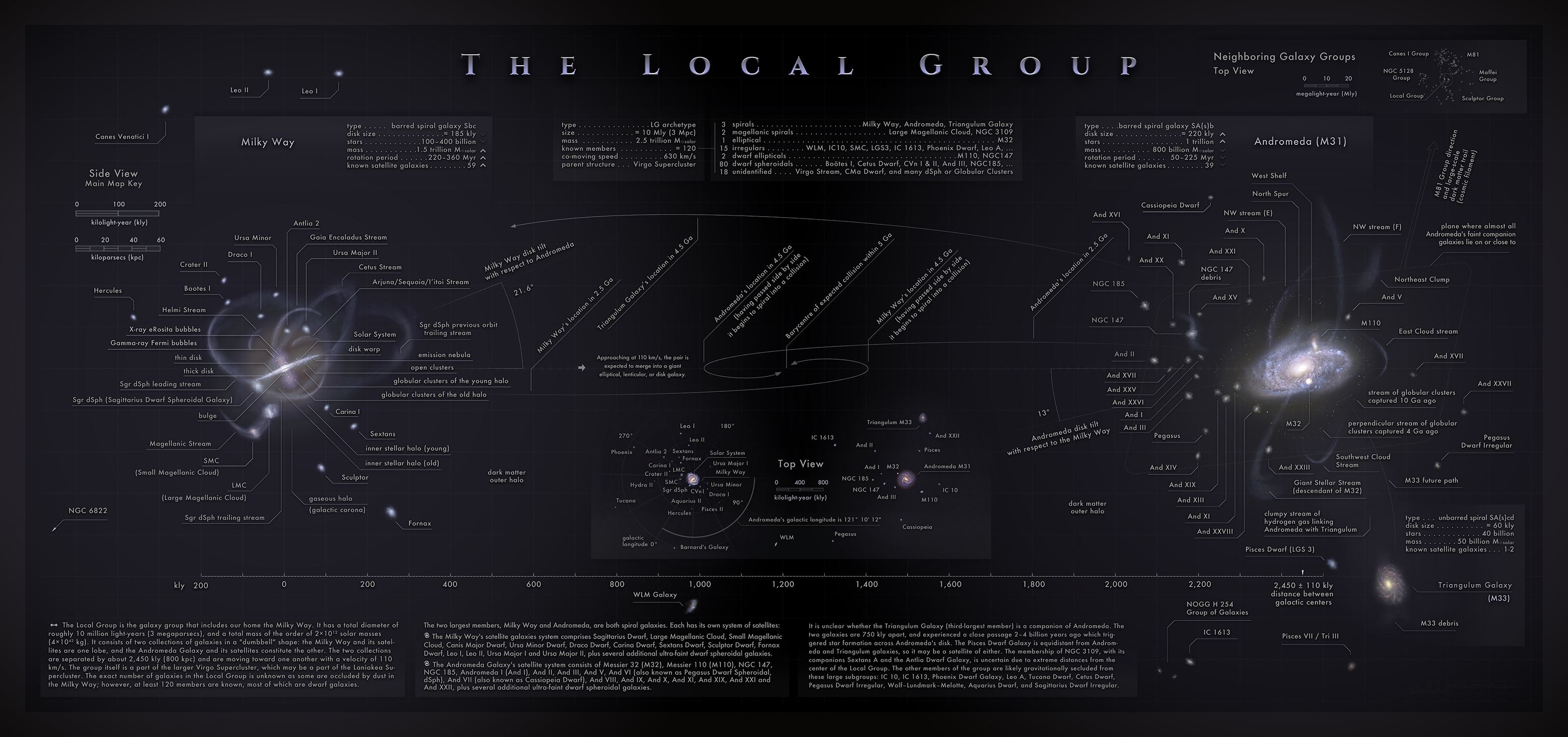 A side view of the Local Group of galaxies that contains the Milky Way, Andromeda and other 120 minor galaxies. The main map is accompanied by technical sheets and expected future path for major group members, top view and a neighboring groups scheme. Developed in July 2022 by Pablo Carlos Budassi. Last update: 5 Jul 2022.
A side view of the Local Group of galaxies that contains the Milky Way, Andromeda and other 120 minor galaxies. The main map is accompanied by technical sheets and expected future path for major group members, top view and a neighboring groups scheme. Developed in July 2022 by Pablo Carlos Budassi. Last update: 5 Jul 2022.Panoramic Zoom Series
Local Sheet – Council of Giants – Local Group – Milky Way – Orion Spur

An accurately scaled zoom series of our cosmic address—ideal for your classroom or studio.
Buy Poster ✧ Print ✧ Mug ✧ Other Products ✧ HD Download



Presenting a frontal panorama of the Solar System’s ensemble, meticulously scaled to showcase the relative sizes of planets, dwarf planets, and significant moons. This cosmic portrait integrates the Pleiades star cluster proportionally with the solar visage. The compilation utilizes the highest quality images obtained of each solar system object depicted, providing a clear and realistic visual reference of our cosmic vicinity’s scale.
The planets and moons of the solar system are depicted here on a histogram-like scale, where sizes are shown in consistent intervals rather than the actual uneven progression of scales.
Buy Print ✧ Buy Poster ✧ Quality Metal Print ✧ Other Products ✧ HD Download

On Mercury, the spacecraft Messenger found evidence of water ice. There may be scientific support, based on studies reported in March 2020, for considering that parts of the planet may have been habitable, and perhaps that life forms, albeit likely primitive microorganisms, may have existed on its surface.





Ceres, the only dwarf planet in the asteroid belt, has a thin water vapor atmosphere. The vapor could have been produced by ice volcanoes or by sublimating ice from the surface. The presence of water on Ceres had led to speculation about its current and past habitability. Although the dwarf planet might not have living things today, there could be signs it harbored life in the past.

Jupiter was computed by Carl Sagan and others in the 1960s and 1970s considering conditions for hypothetical microorganisms living in its atmosphere. The intense radiation and other conditions, however, do not appear to permit encapsulation and molecular biochemistry, so life there is thought unlikely. In contrast, some of Jupiter’s moons may have habitats capable of sustaining life.


 Due to lo‘s proximity to Jupiter, it is subject to intense tidal heating which makes it the most volcanically active object in the Solar System. The outgassing from erupting umbrella-shaped plumes generates a trace atmosphere. Hydrogen sulfide has been proposed as a hypothetical solvent for life and is quite plentiful on lo, and may be in liquid form a short distance below the surface.
Due to lo‘s proximity to Jupiter, it is subject to intense tidal heating which makes it the most volcanically active object in the Solar System. The outgassing from erupting umbrella-shaped plumes generates a trace atmosphere. Hydrogen sulfide has been proposed as a hypothetical solvent for life and is quite plentiful on lo, and may be in liquid form a short distance below the surface.



Saturn’s Titan has an atmosphere that is considered similar to that of the early Earth, although somewhat thicker. The surface is characterized by hydrocarbon lakes, cryovolcanos, and methane rain and snow. Like Earth, Titan is shielded from the solar wind by a magnetosphere, in this case, generated by its parent planet for most of its orbit. The shield’s influence on Titan’s atmosphere is considered sufficient to facilitate the creation of complex organic molecules. The remote possibility of an exotic methane-based biochemistry life has been hypothesized.

Saturn’s Dione has been suggested to have an internal water ocean under 100 kilometers of crust. Based on data gathered and simulations, the tens of kilometers deep ocean would likely be in contact with the moon’s rocky core, making it suitable for microbial life in the aspect of available nutrients. This ocean has probably existed for the moon’s entire history, meaning there has potentially been plenty of time for life to take root and evolve beneath Dione’s battered, icy shell.

Models of heat retention and heating via radioactive decay in smaller icy Salar System bodies suggest that Rhea, Titania, Oberon, Triton, Pluto, Eris, Sedna, and Orcus may have oceans underneath solid icy crusts approximately 100 km thick. Of particular interest in these cases is the fact that the models indicate that liquid layers are in direct contact with the rocky cores, which allows efficient mixing of minerals and salts into the water. This configuration contrasts with the oceans that may be inside larger icy satellites like Ganymede, Callisto, or Titan, where layers of high-pressure phases of ice are thought to underlie the liquid water layer.

Presented below are three additional side views of our cosmic neighborhood, depicted to scale with an extraordinary level of detail:

[bit.ly/earthmoondiagram]
Detailed diagram showing objects between the Earth and the Moon including artificial satellites, relevant sized near-Earth passing asteroids (past and future), and the different distances the Moon can take from Earth.
(3) Milky Way-Andromeda
MARS
Very detailed Map of Mars
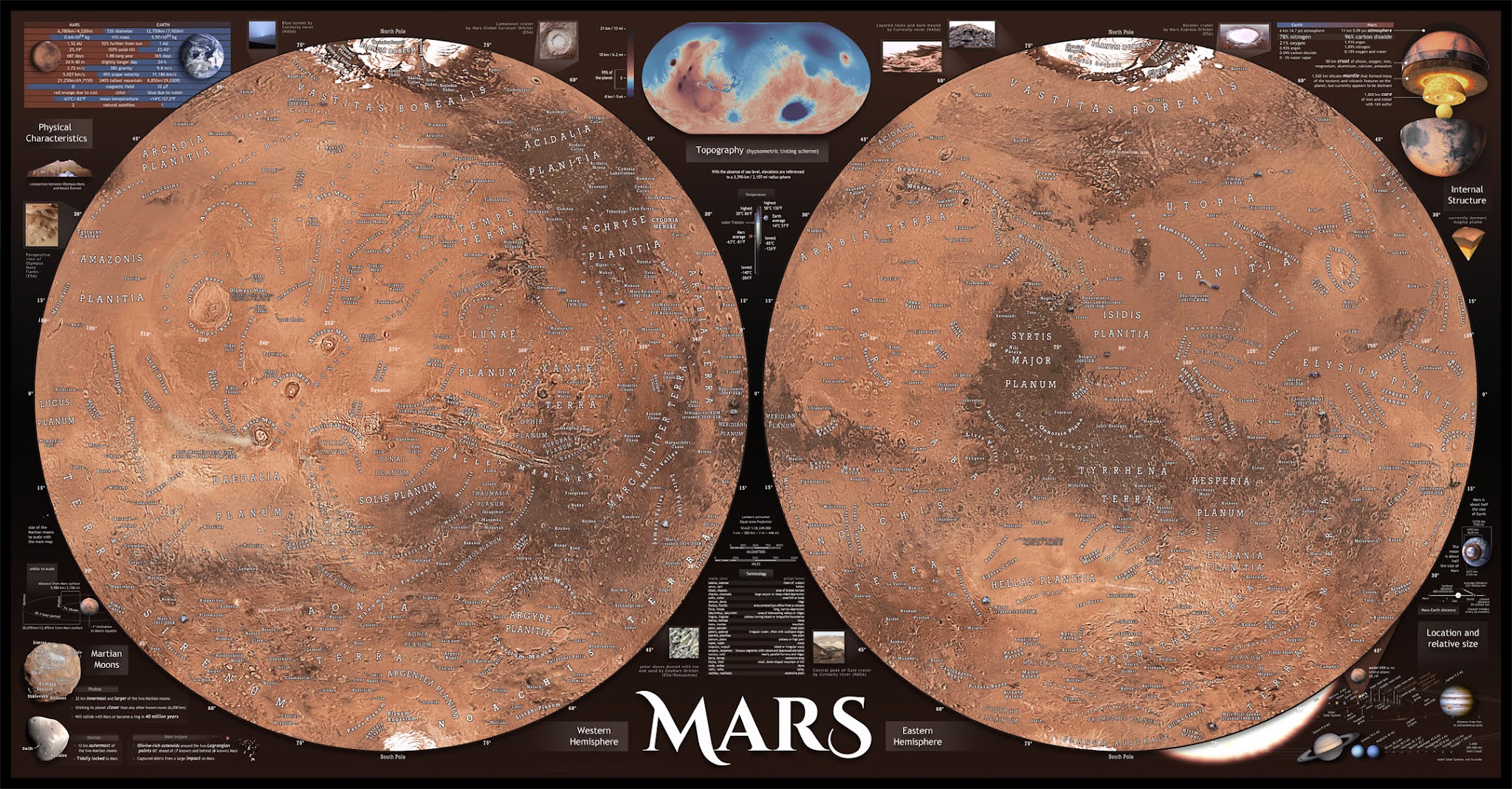
This map of Mars, displayed in Lambert Azimuthal Equal-Area Projection, features annotations of geologic structures including 250 craters.
Infographics around the map provide information on Mars’ physical characteristics compared to Earth, details about its moons, elevation tinting scheme, internal structure, geologic terminology, its location in the Solar System, and size comparisons with Earth and the Moon.
Developed by Pablo Budassi in 2024, this map contains detailed annotations, including 16 human exploration mission landing sites and future mission sites.
In the coming years of the new space age, as we become a multiplanetary species, the “Red Pearl” will be more present than ever in our lives and we should become familiar with it. This detailed map of fine design in a study or living room would be a good starting point!

Korolev crater, an 82-kilometre-across feature found in the northern lowlands of Mars.

MAP OF TERRAFORMED MARS

Buy Poster ✧ Metal Plate ✧ High Quality Print ✧ Jigsaw Puzzle ✧ Pillow ✧ Other Products ✧ HD Download ✧
▿ explore and zoom below ▿


Posters and Prints ✧ Metal Plates
EARTH



SCALES OF NATURE
Quantum Foam to Universe
Vertical Layout English Annotations:
Buy Print Buy Poster Quality Metal Plate Other Products HD Download
Horizontal Layout English Annotations:
Buy Print Buy Poster Other Products HD Download
No annotations:
Buy Print Buy Poster Other Products HD Download
All versions bundle HD download
“Powers of Ten: Human to Universe”
Vertical Layout English Annotations:
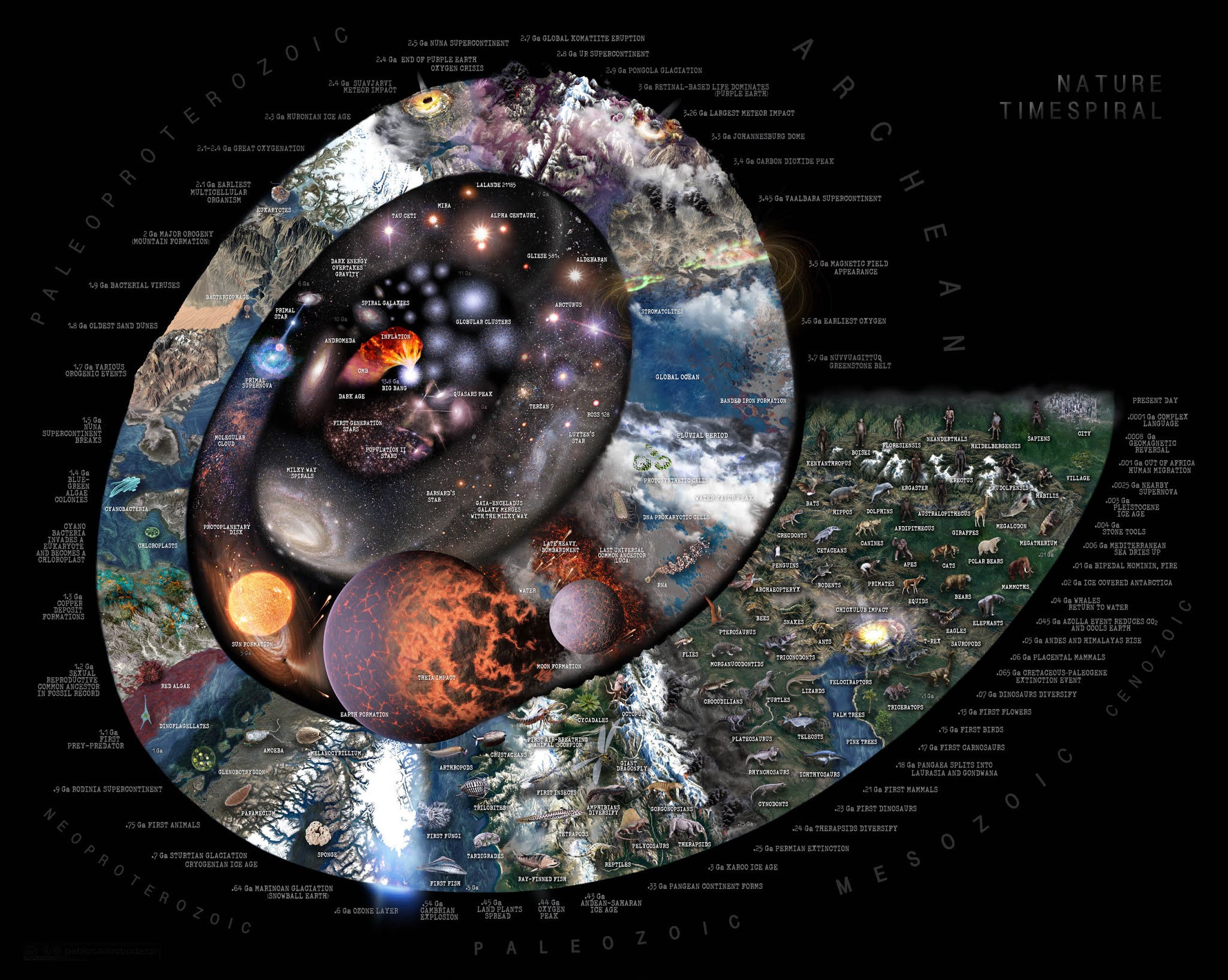
Big History of nature is presented in the extent of this spiral. Notable events are illustrated from the center outward, counterclockwise. A 90-degree stretch of the spiral represents one billion years (1 Ga). The last 500 million years are represented in a 90-degree stretch for more detail on our recent history. Some of the events depicted are the emergence of cosmic structures (stars, galaxies, planets, clusters, and other structures), the emergence of the solar system, the Earth and the Moon, important geological events (gases in the atmosphere, great orogenies, glacial periods, etc.), emergence and evolution of living beings (first microbes, plants, animals, fungi), the evolution of hominid species and important events in human evolution.
Buy Print Buy Poster Quality Metal Plate Other Products HD Download
Other Languages: ◇ French Print – Plate ◇ Spanish Print – Plate ◇ Catalan Print ◇ German vert. white Print – Plate ◇ German vert. black Print ◇ German horiz. black Print – Plate ◇

Messier 78 (M78), also known as NGC 2068, is the brightest diffuse reflection nebula in the sky, with an apparent magnitude of 8.3. Located about 1,600 light-years from Earth in the constellation Orion, it occupies an area of 8 by 6 arc minutes, roughly corresponding to a linear diameter of 10 light-years.
M78 can be found 2 degrees north and 1.5 degrees east of Alnitak, the easternmost star of Orion’s Belt, which also has the Horsehead Nebula and the Flame Nebula nearby.
Easily visible in large binoculars and small telescopes, M78 appears as a hazy, comet-like patch of light illuminated by two 10th magnitude stars. In clear, dark skies, it can be seen with 10×50 binoculars.
4-inch telescopes reveal the haze around M78, and 8-inch telescopes start to show details. Nearby, the 9th magnitude open cluster NGC 2112 can be seen about 1.75 degrees east of the nebula. The best time to observe M78 is during winter when Orion is high in the sky.
M78 is part of the Orion Molecular Cloud Complex, along with NGC 2064, NGC 2067, and NGC 2071. The Complex is one of the brightest and most active star-forming regions in the sky, containing famous nebulae like the Orion Nebula (M42) and the Horsehead Nebula.
As a reflection nebula, M78 contains little ionized gas and reflects the light of nearby stars, particularly two early B-type 10th magnitude stars, HD 38563A and HD 38563B, which illuminate its dust clouds.
CC BY SA Source image: ESA/Euclid/Euclid Consortium/NASA Processing: Pablo C. Budassi.
✳︎ 3 FAMOUS NEBULAE PANORAMA ✳︎
Omega Nebula + Eagle Nebula + Sharpless 2-54

HD Print ✧ Other Products ✧ HD download
The Omega Nebula (Messier 17) on the left, the iconic Eagle Nebula (Messier 16) in the center, and the faint, glowing cloud of gas called Sharpless 2-54 on the right share the stage in this enormous three gigapixel image based on data from ESO’s VLT Survey Telescope (VST). Pablo Budassi adapted and enhanced this image in February 2025.
 This magnificent trio of nebulae forms part of an expansive tapestry of interstellar gas and dust, where new stars are continually being born, casting their radiant light and shaping the cosmic landscape.
This magnificent trio of nebulae forms part of an expansive tapestry of interstellar gas and dust, where new stars are continually being born, casting their radiant light and shaping the cosmic landscape.
The Omega Nebula, also known as Messier 17 (M17) or the Swan Nebula, spans about 15 light-years across and is situated approximately 5,000 to 6,000 light-years away from Earth in the constellation Sagittarius. This nebula is a massive star-forming region, housing young, hot stars that illuminate the surrounding gas and dust, creating a breathtaking and vibrant spectacle in the night sky.

The Eagle Nebula, or Messier 16 (M16), is located about 7,000 light-years away from Earth in the constellation Serpens and spans approximately 70 by 55 light-years. Its vast expanse and mesmerizing formations make it a favorite target for astronomers and astrophotographers alike. The iconic “Pillars of Creation”—towering structures of gas and dust captured in 2014 by the Hubble Space Telescope and in 2023 by JWST can be spotted at the center of the bright region.

Sharpless 2-54 is an extended bright nebula in the constellation Serpens. In its core there are many protostars and many infrared sources; some of these sources, like IRAS 18151−1208, are most probably very young high-mass stars. The older star population in this region has an average age of 4–5 million years, and its components are grouped in the open cluster NGC 6604 (blue/white stars on the center and left). Sh 2-54 belongs to an extended nebulosity that includes also the Eagle Nebula and the Omega Nebula.

Pillars of Creation is a photograph originally taken by the Hubble Space Telescope of elephant trunks of interstellar gas and dust in the Eagle Nebula, in the Serpens constellation, some 6,500–7,000 light years from Earth. They are so named because the gas and dust are in the process of creating new stars, while also being eroded by the light from nearby stars that have recently formed. Taken on April 1, 1995, it was named one of the top ten photographs from Hubble by space experts. The astronomers responsible for the photo were Jeff Hester and Paul Scowen from Arizona State University. The region was rephotographed by ESA’s Herschel Space Observatory in 2011, and again by Hubble in 2014 with a newer camera. The image is noted for its global culture impact, with National Geographic noting on its 20th anniversary that the image had been featured on everything from “t-shirts to coffee-mugs”.Poster ✧ Print ✧ Quality Metal Plate ✧ Pillow, duvet cover
Hubble Classic Version – Enhanced:
✳︎ SEAGULL NEBULA ✳︎
✳︎ WING NEBULA ✳︎
✳︎ VELA SUPERNOVA REMNANT ✳︎
✳︎ N44 SUPERBUBBLE ✳︎

JWST IMAGES
The last time we saw the JW Space Telescope. Iconic image reprocessed by our team available in acrylic blocks and other products!
EXOPLANETS

——————
Alkali metal clouds gas giant
——————
Ammonia clouds gas giant
——————
Ammonia planet
——————
Barren planet
——————
Brown dwarf
——————
Carbon planet
Cold eyeball planet
——————
——————
——————
——————
——————
——————
——————
——————
——————
——————
——————
——————
——————
——————
——————
——————
——————
——————
——————
——————
——————
——————
——————
——————
——————
——————
——————
——————
——————
——————
——————
——————
——————
——————
——————
——————
——————
——————
——————
Terrestrial planet
——————
——————
——————
——————
——————

As we venture beyond Earth’s orbit and set our sights on celestial neighbors, responsible exploration becomes the only acceptable modus operandi. Lunar exploration must be conducted in a collaborative and respectful manner to prevent the creation of another landscape spoiled by orbital congestion and debris.
While sustainable space mining may be theoretically achievable, we should refrain from altering the trajectories of asteroids for any purpose to ensure the safety of Earth and other celestial bodies from unintended anthropogenic-caused impacts. Exploring other worlds that we believe could potentially harbor extraterrestrial life also necessitates the utmost caution on our part.
[ Posters and stickers available ] [ also available in white background ]
When stars die and lose their mass, all the elements that had been generated inside are swept out into space. Then the next generation of stars form from those elements, burn, and are again swept out.


This graphic depicts on a precise scale all 17 basic building blocks of the universe plus the two most relevant composite particles: the protons and neutrons.

2024 Idea and research by Julie R. Peasley, design by Pablo C.Budassi – sources: symmetrymagazine.org, wikipedia.org
Buy Print ✧ Buy Poster ✧ Quality Metal Plate
Elementary particles are incredibly small and lack traditional dimensions like length, width, and height. They are often described as point-like, meaning they are considered to have no size. However, their masses are quite diverse and measurable, and we are obtaining increasingly accurate values as of 2024.

Presented here as a World Map, the CMB features are named after continents and seas, with labels drawn from the constellations below. The concave, double-hemisphere map resembles two halves of an empty orange peel. For reference, the Milky Way’s plane runs along the equator, with the center positioned at the heart of the image. The blue and brown colors indicate temperature fluctuations of up to 300 µK around a 2.725 K average. Although these fluctuations are extremely subtle, the most prominent differences occur on a physical scale of about one degree—roughly 1/180th of the sphere’s diameter—appearing as small dots across the full circle. This results in numerous small islands and fragmented bodies of water. While the resemblance to Earth’s oceanic relief is limited, we aimed to create a credible planetary representation.
▿ explore and zoom below ▿

 You may support our project by purchasing Celestial Zoo posters and books:
You may support our project by purchasing Celestial Zoo posters and books:
* Check out other graphics from our team here














